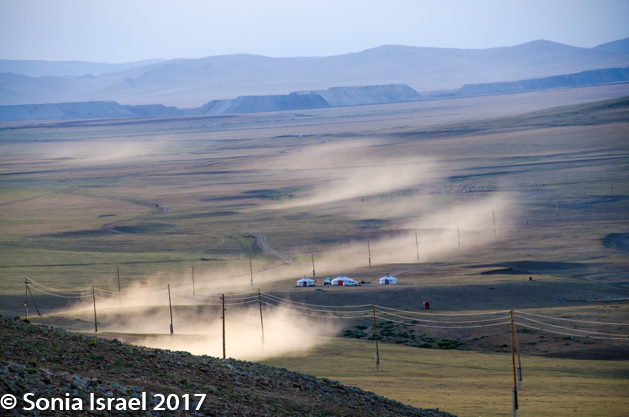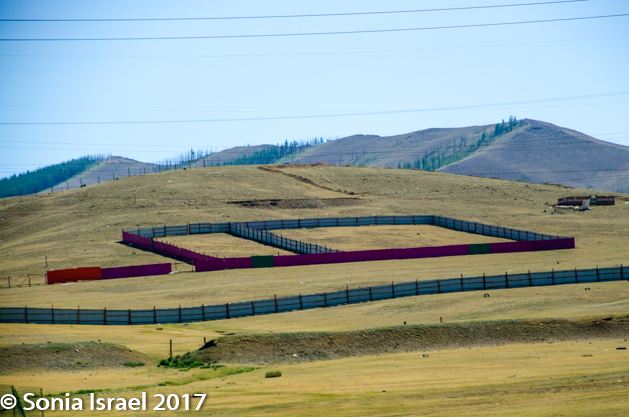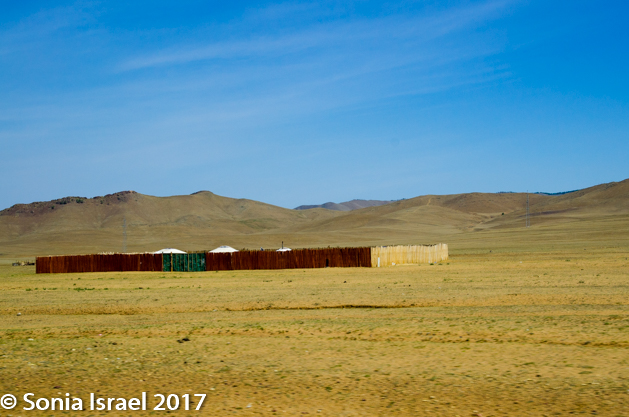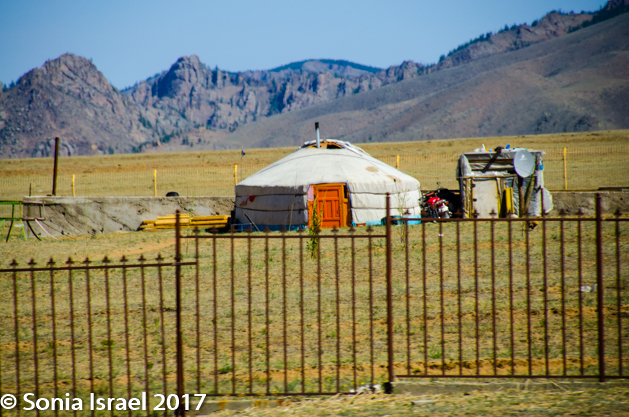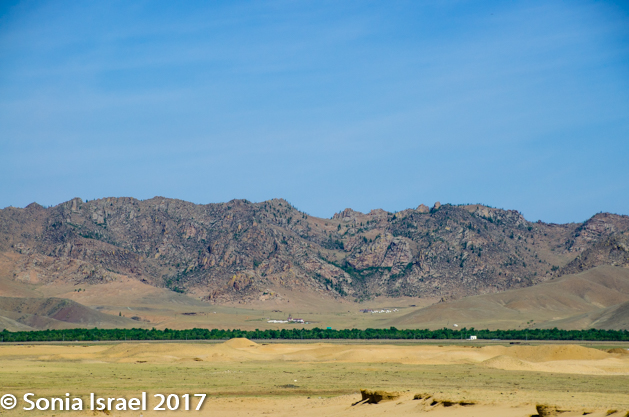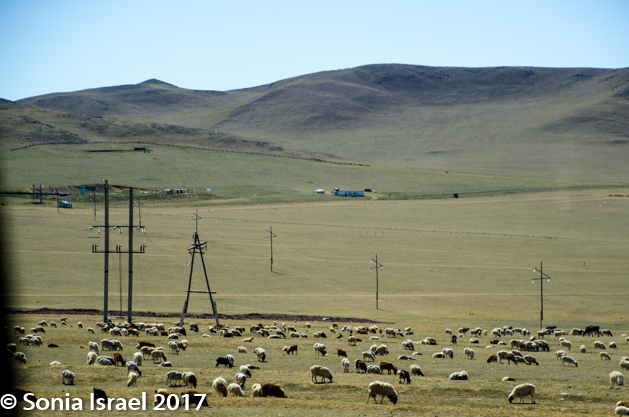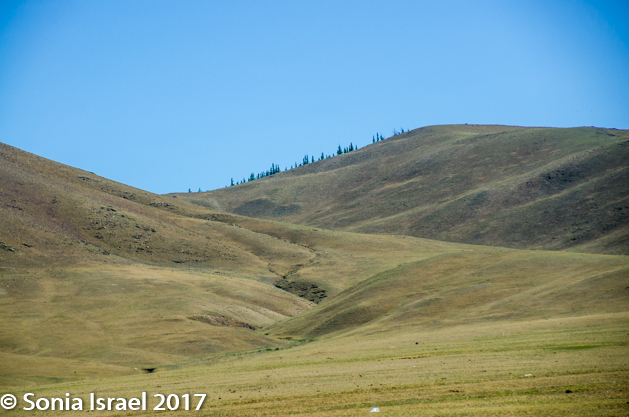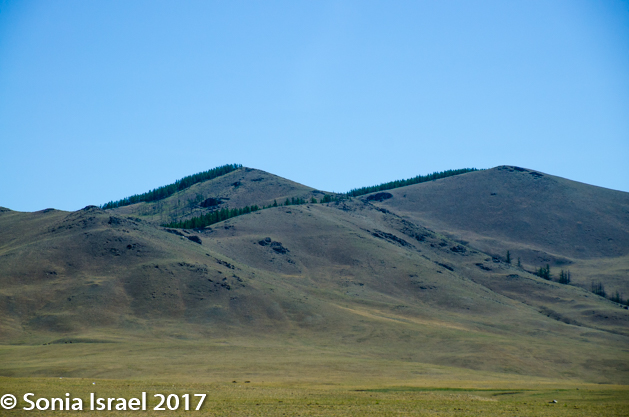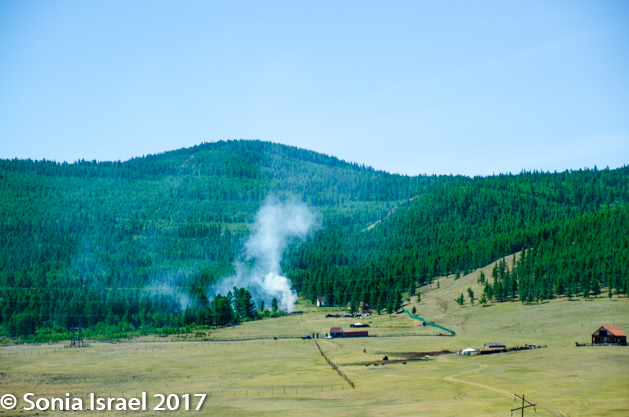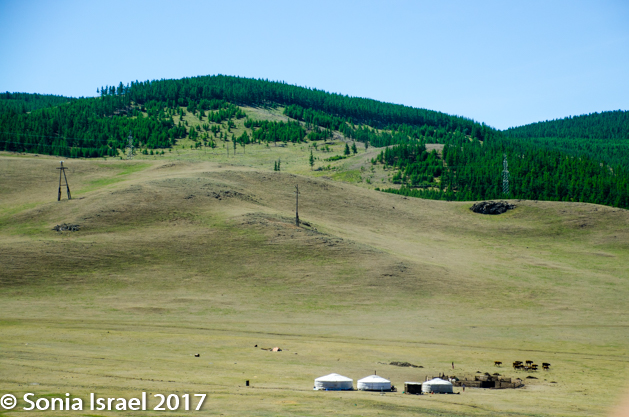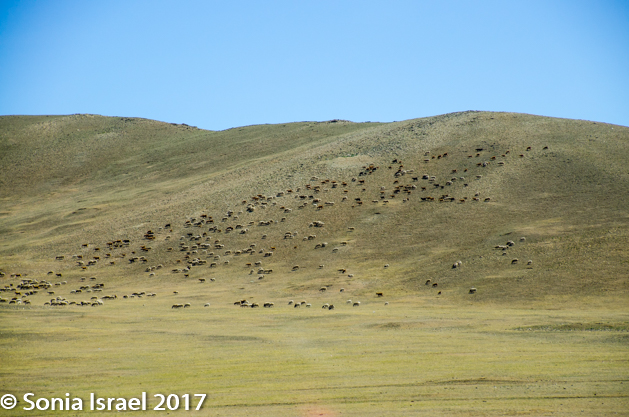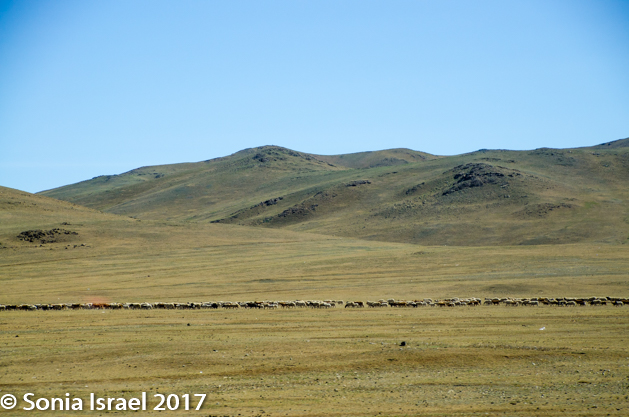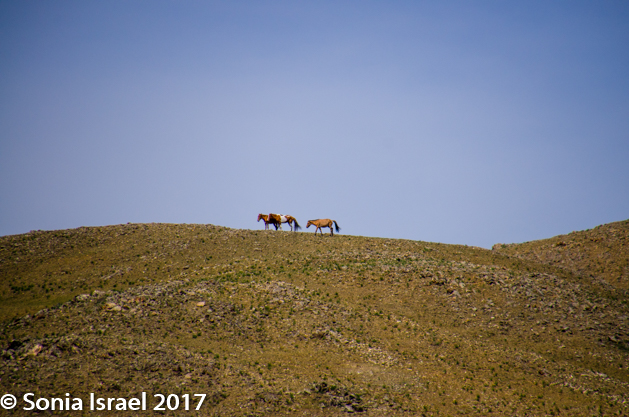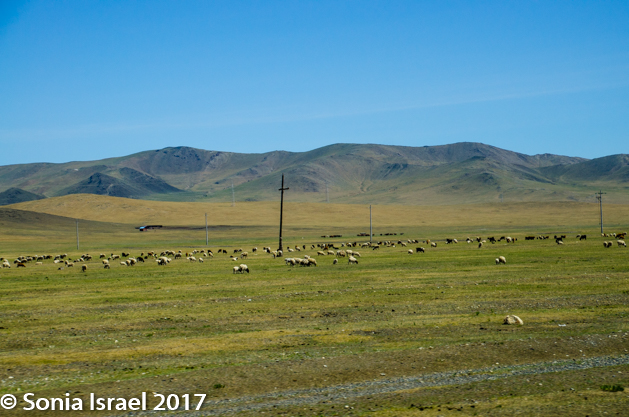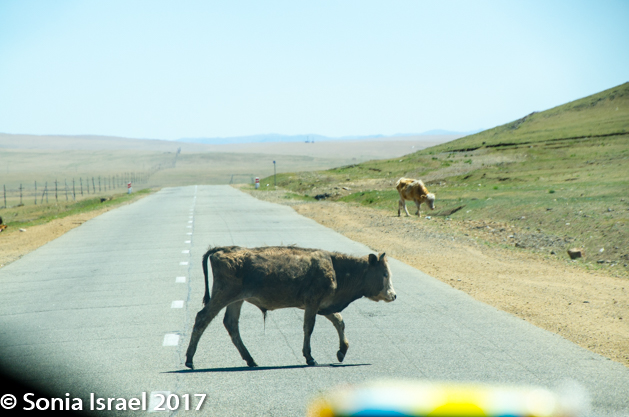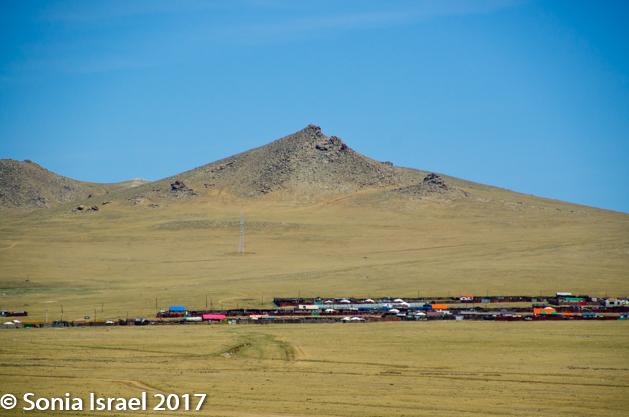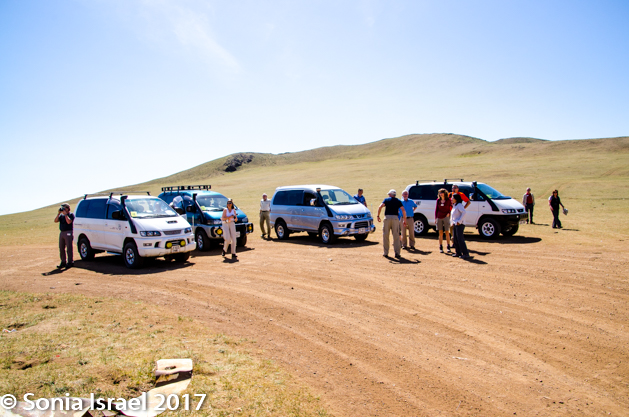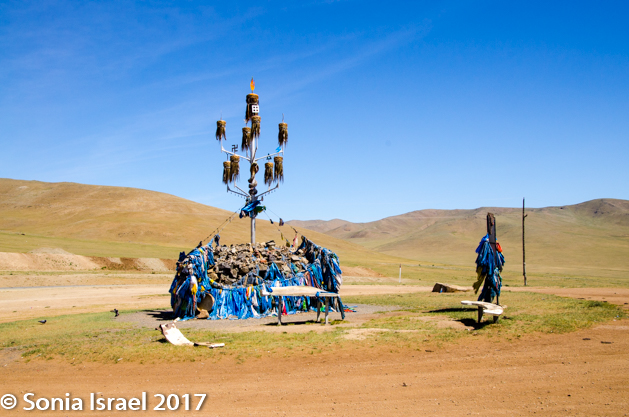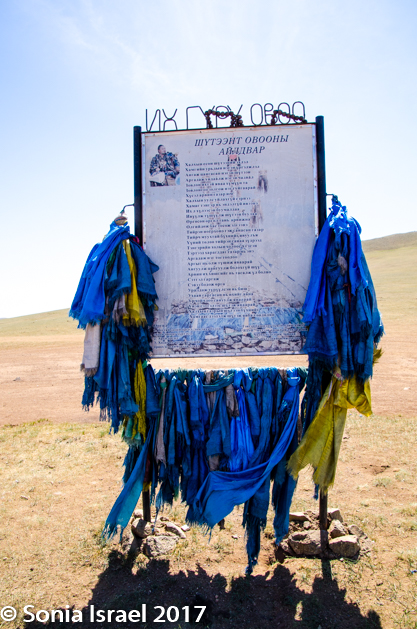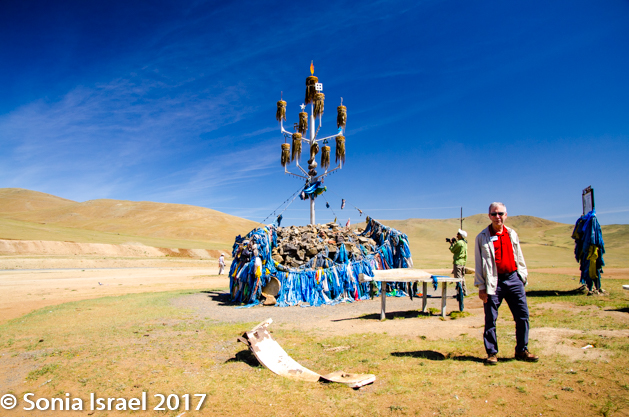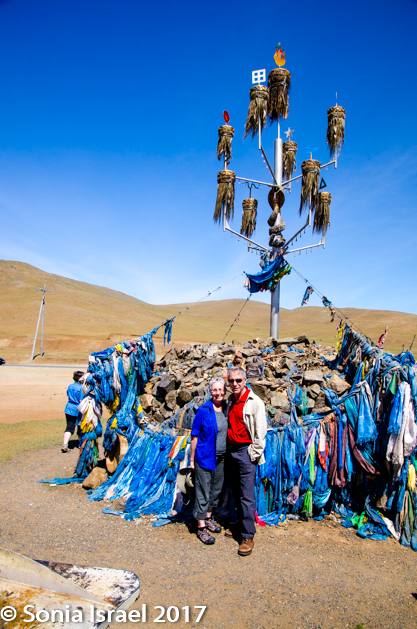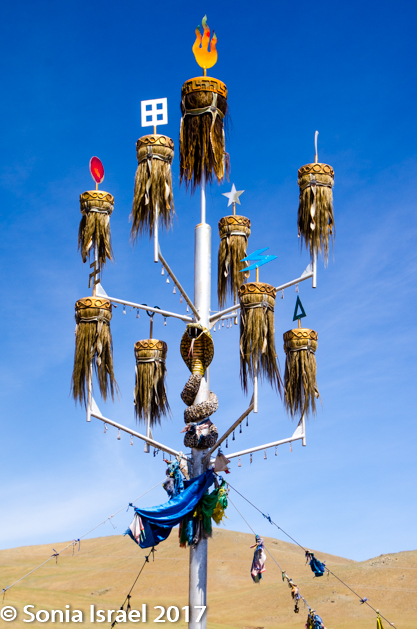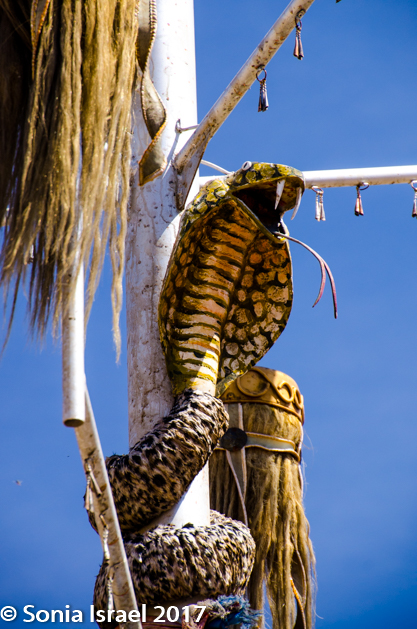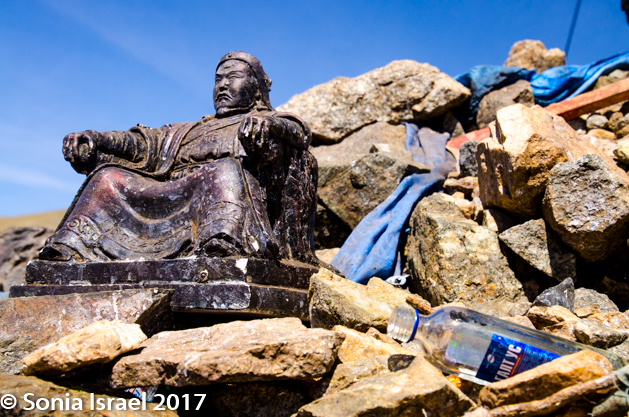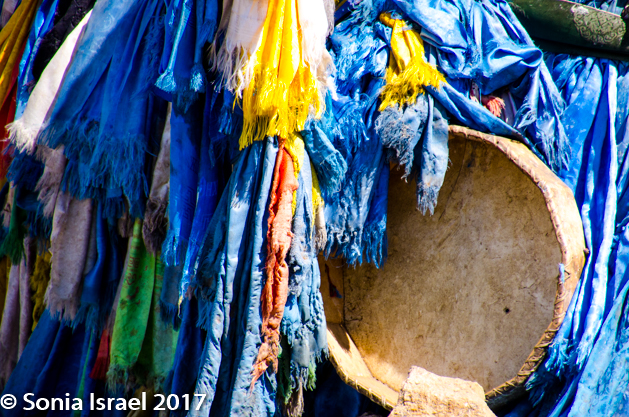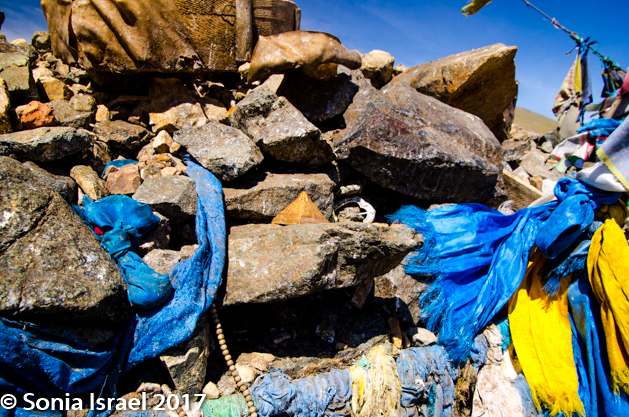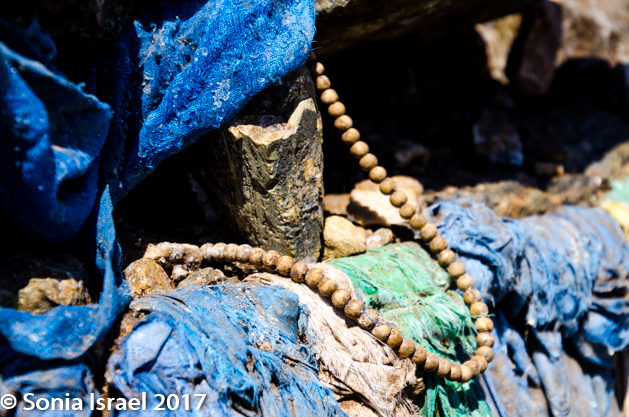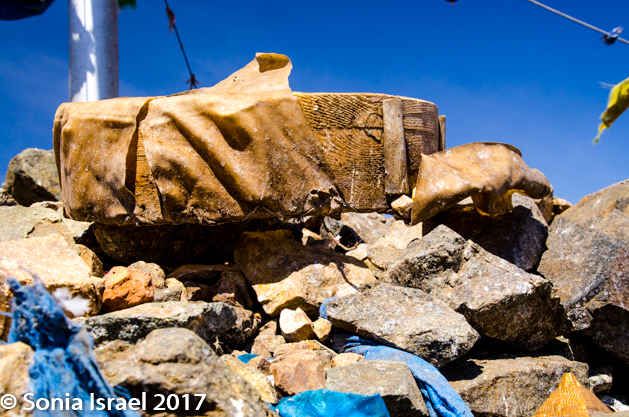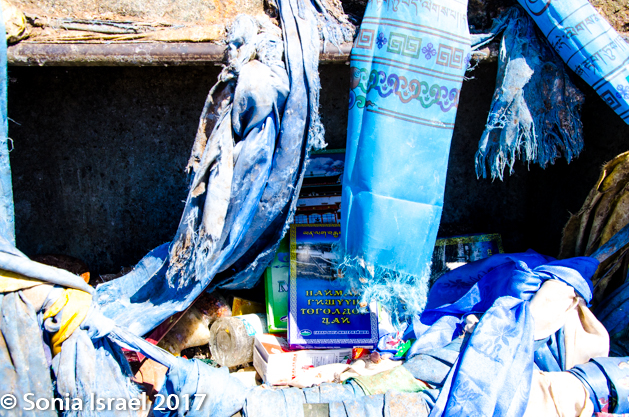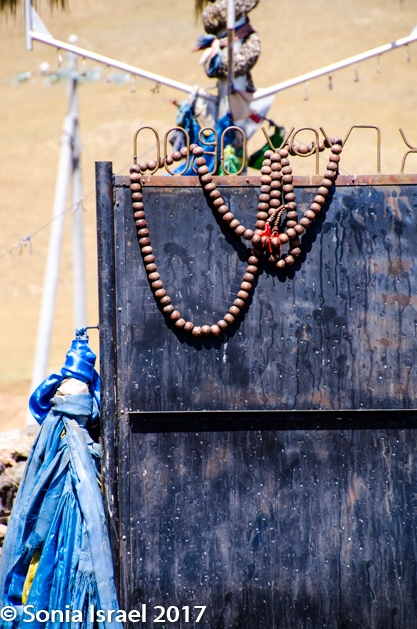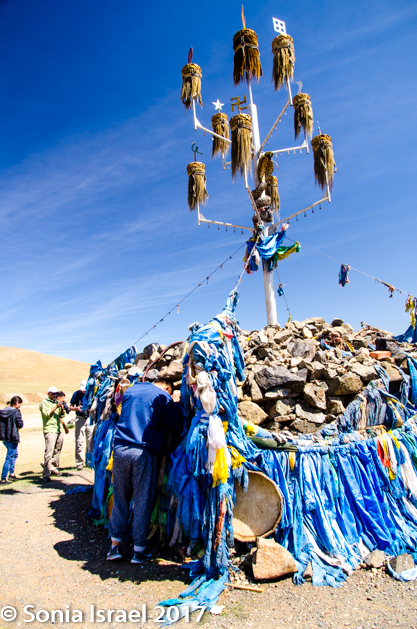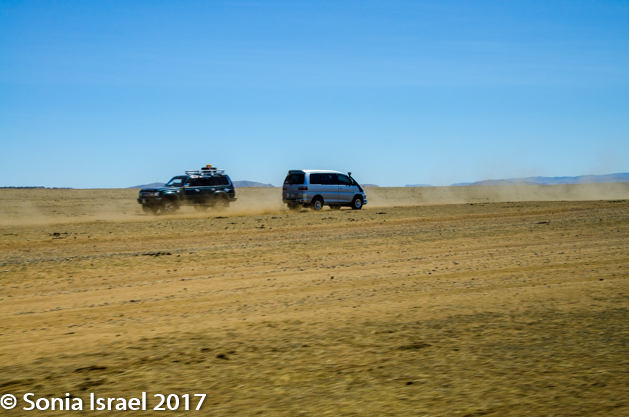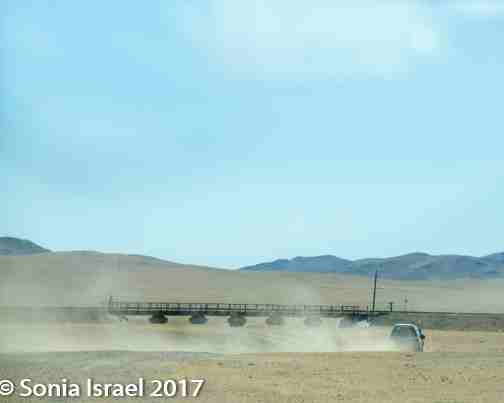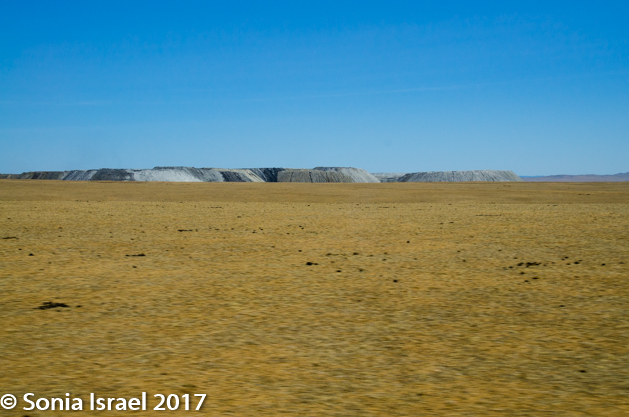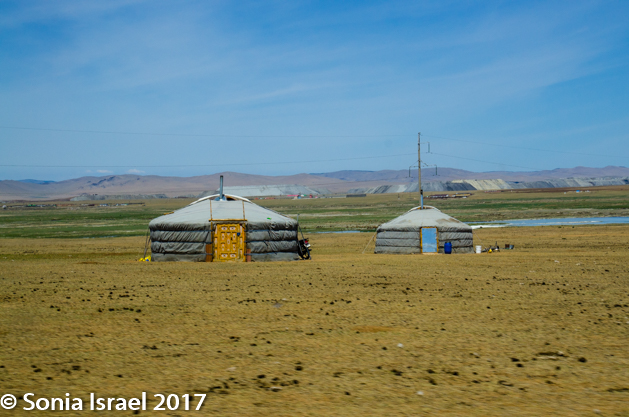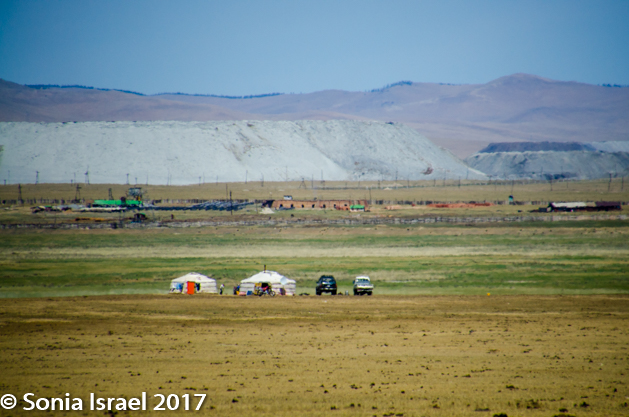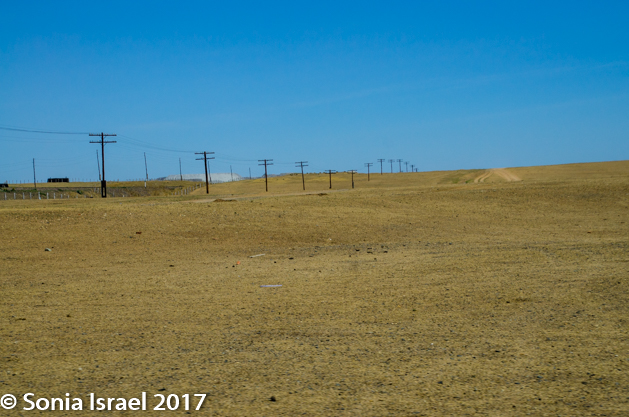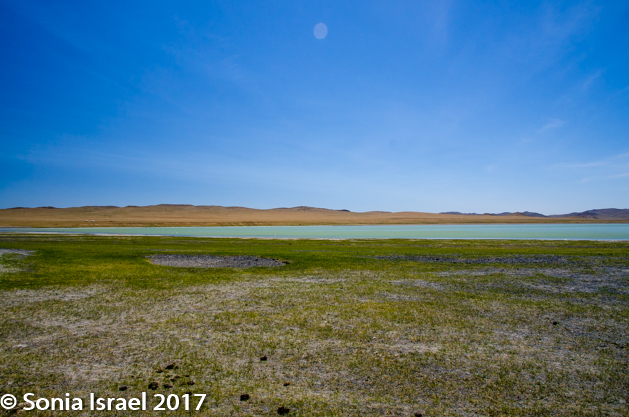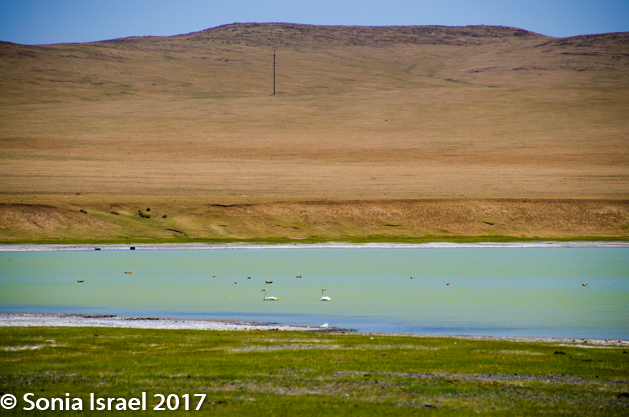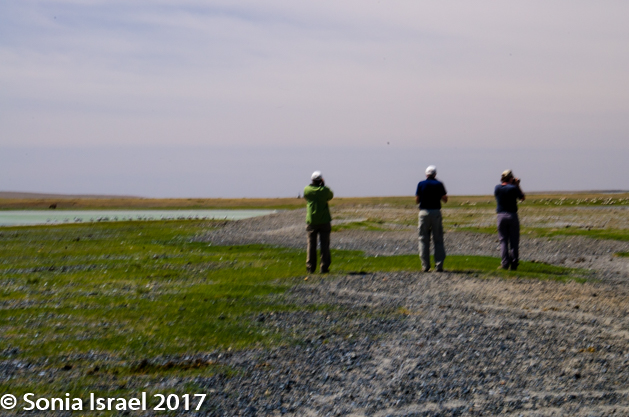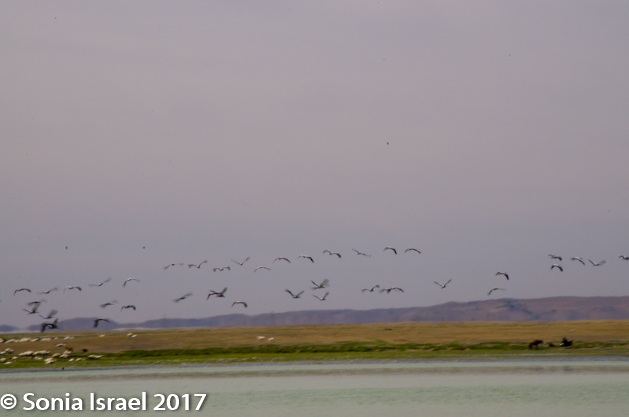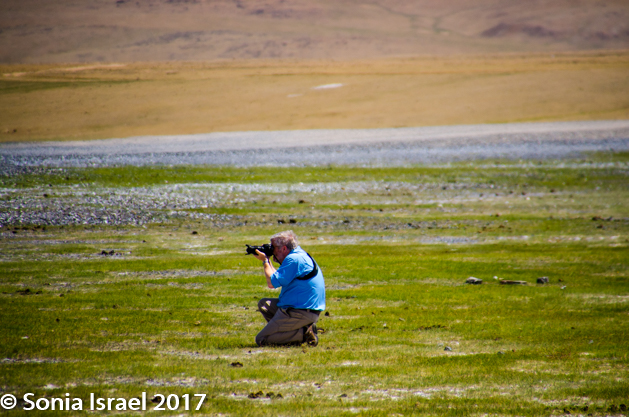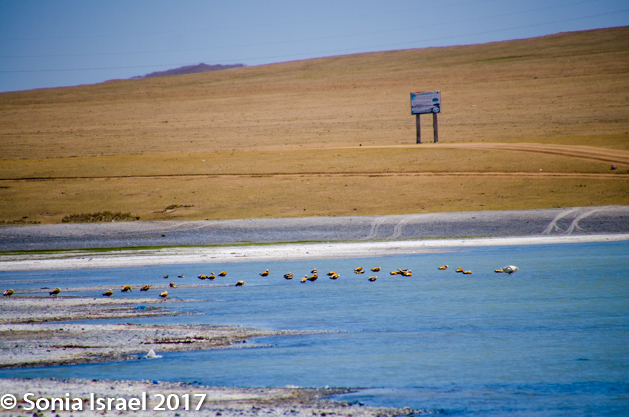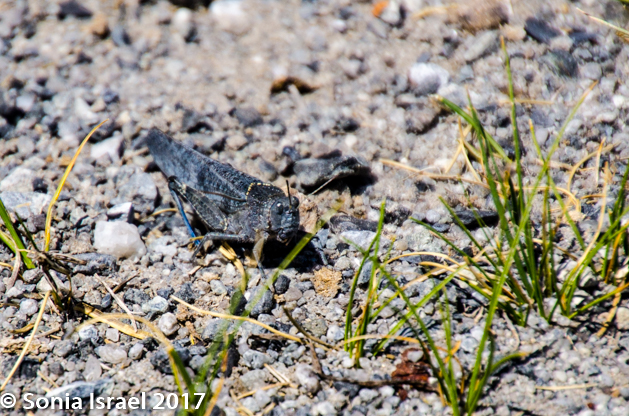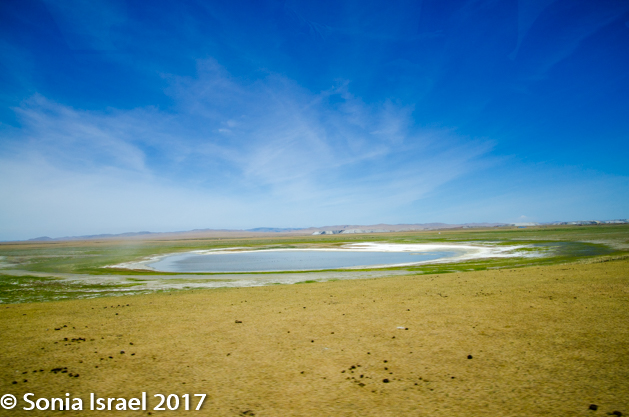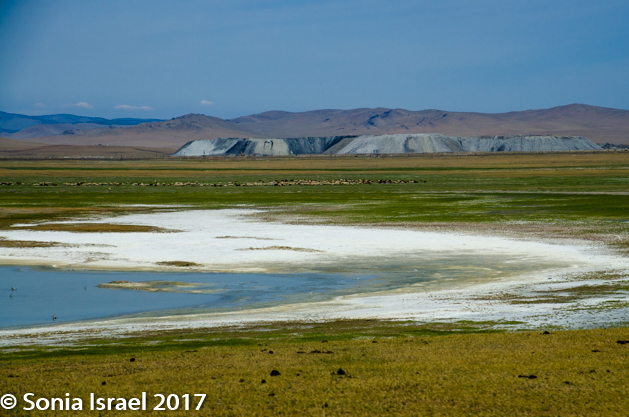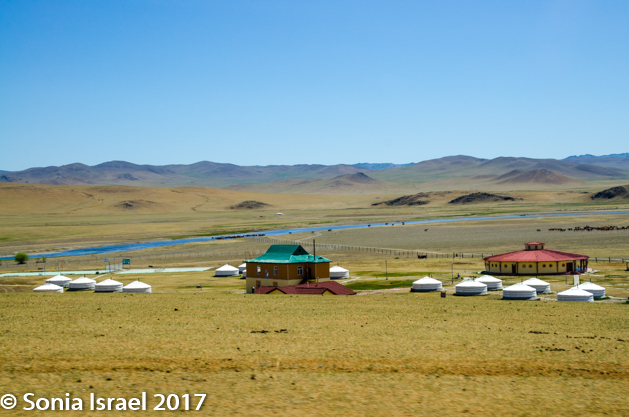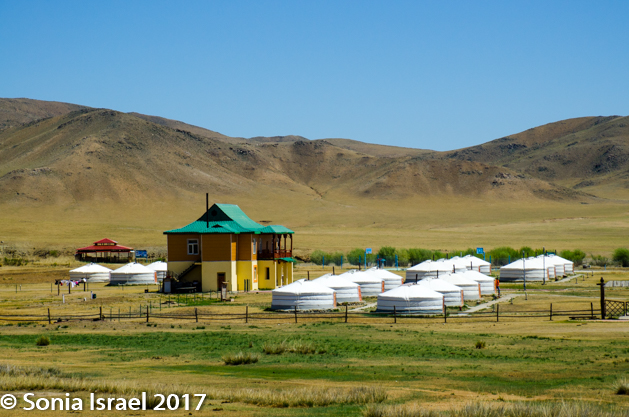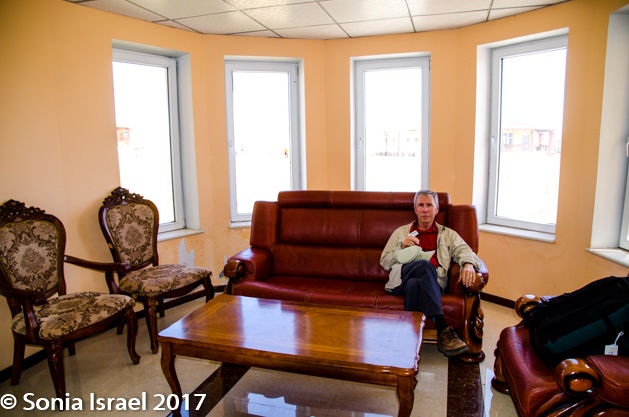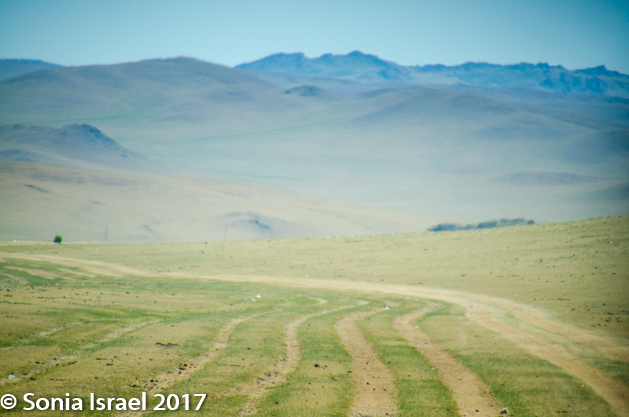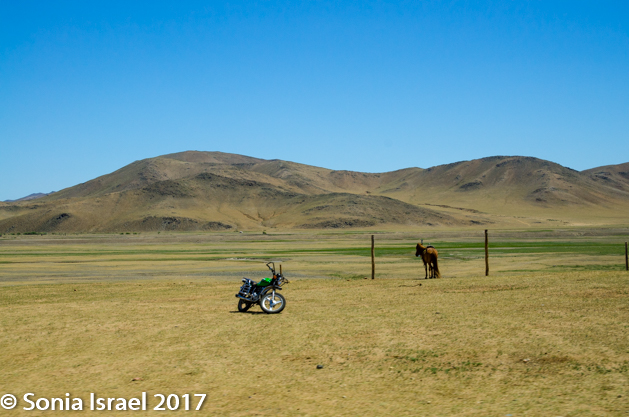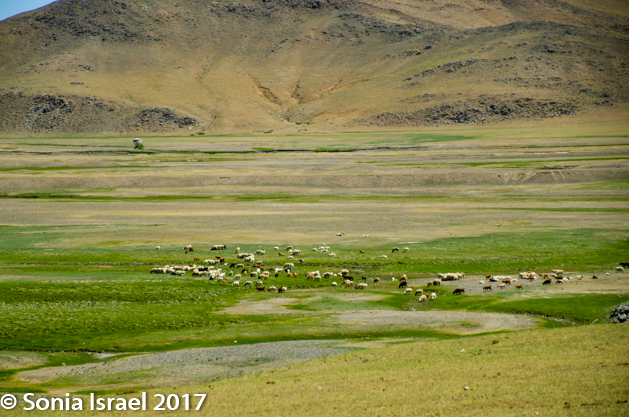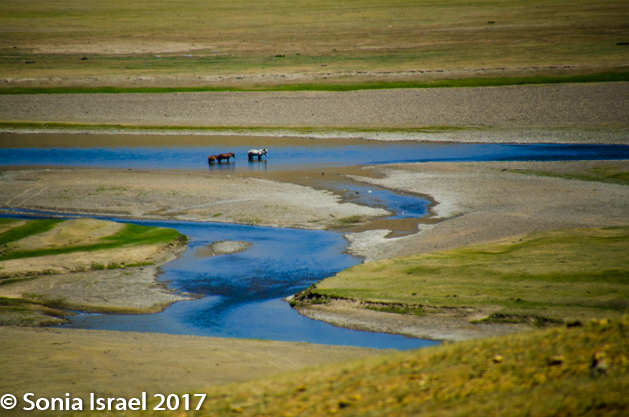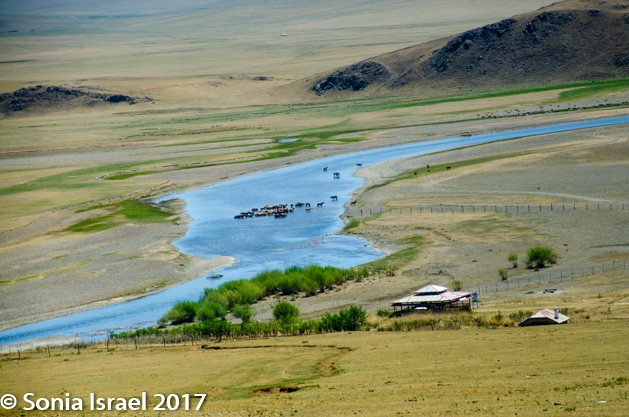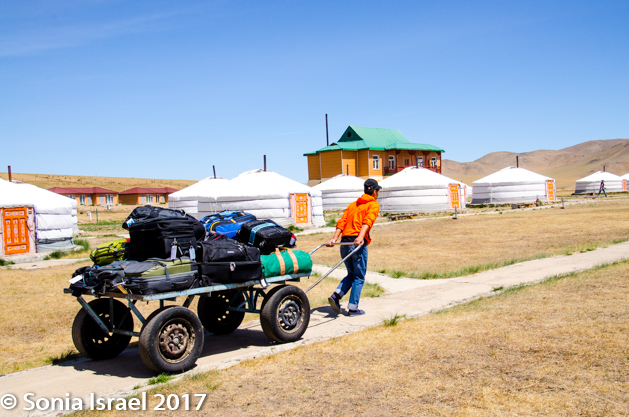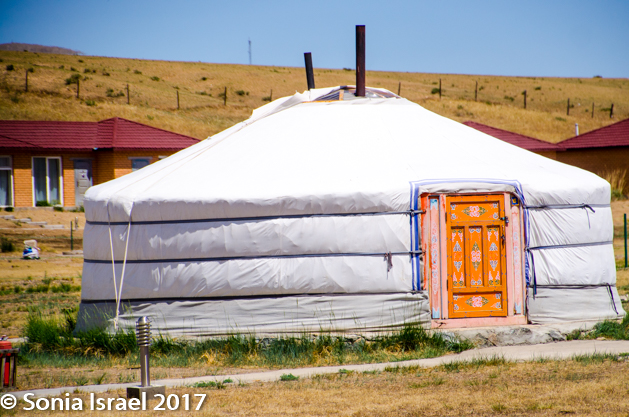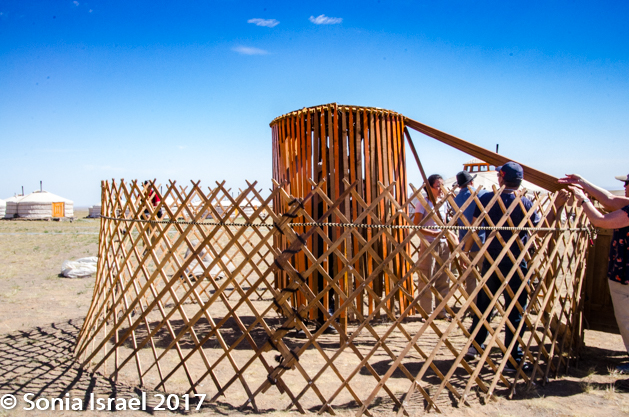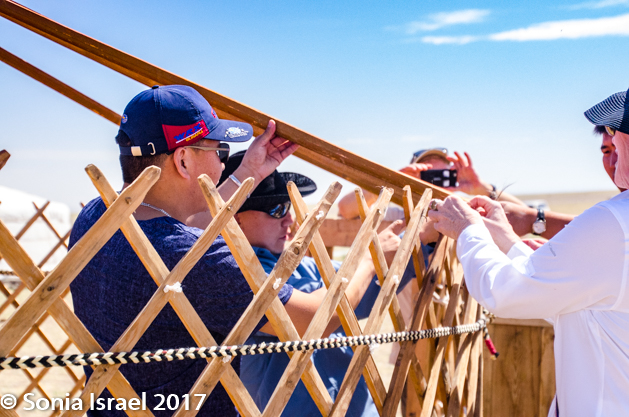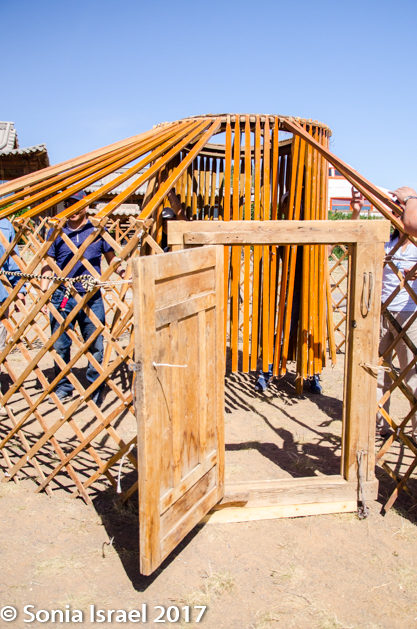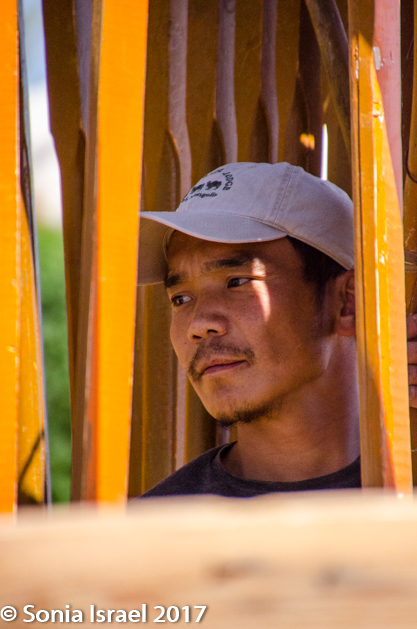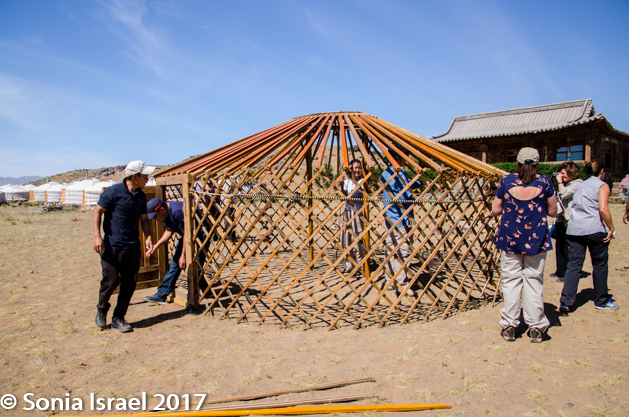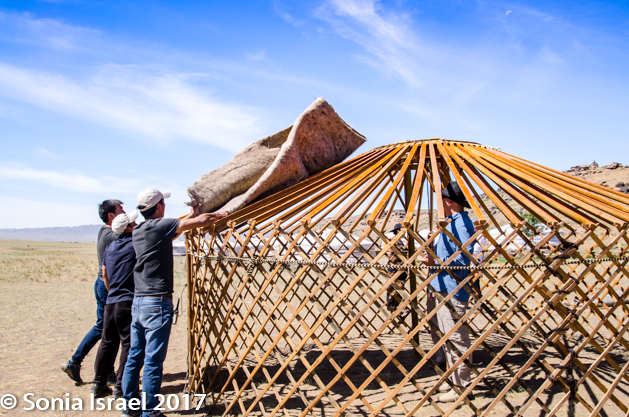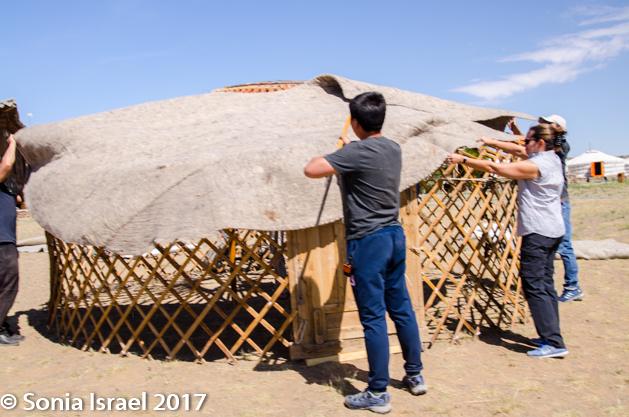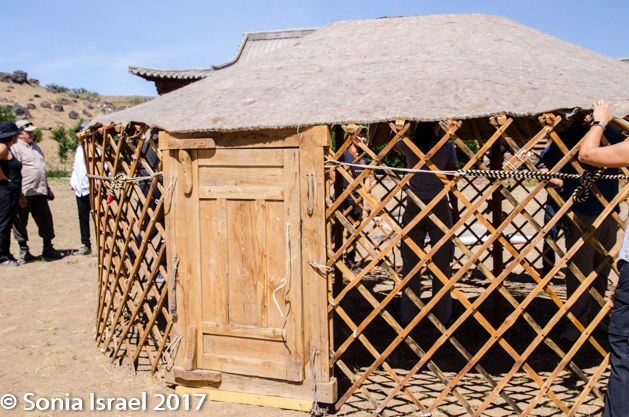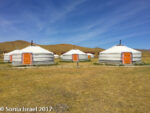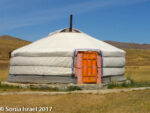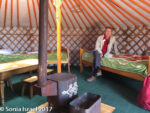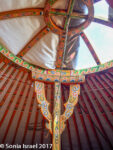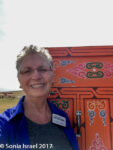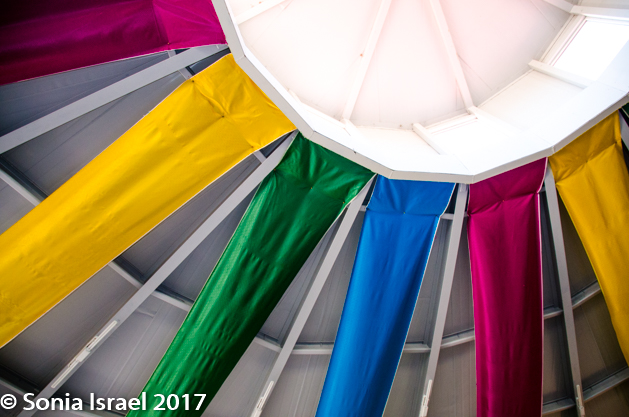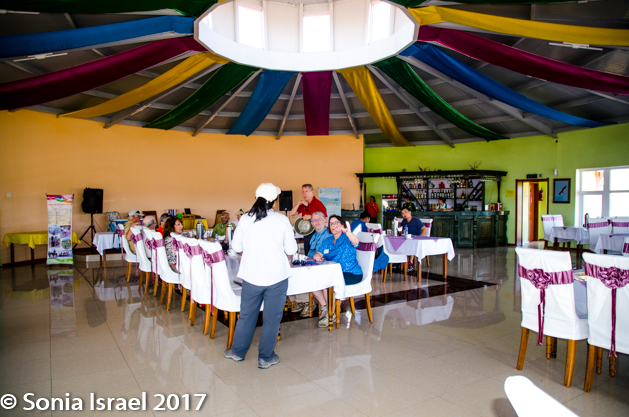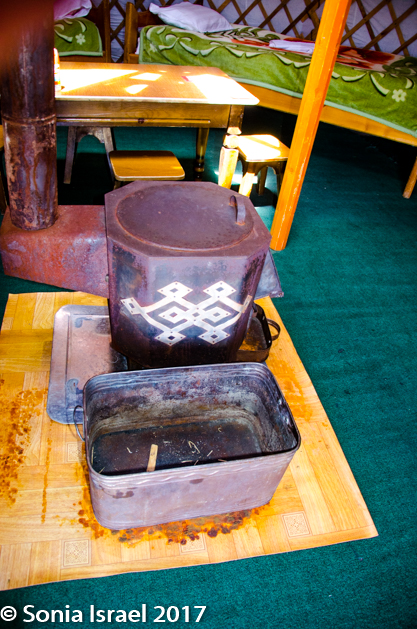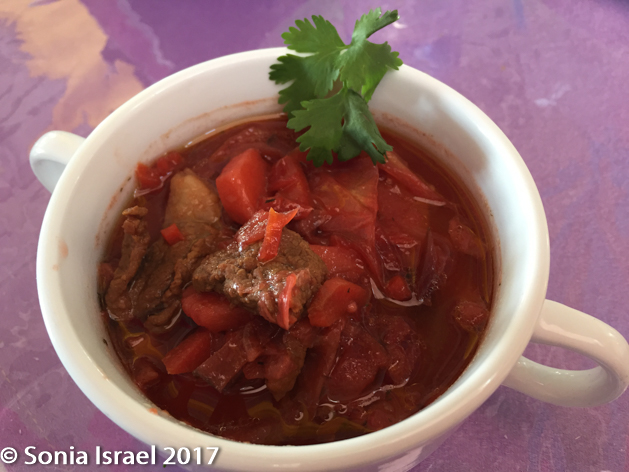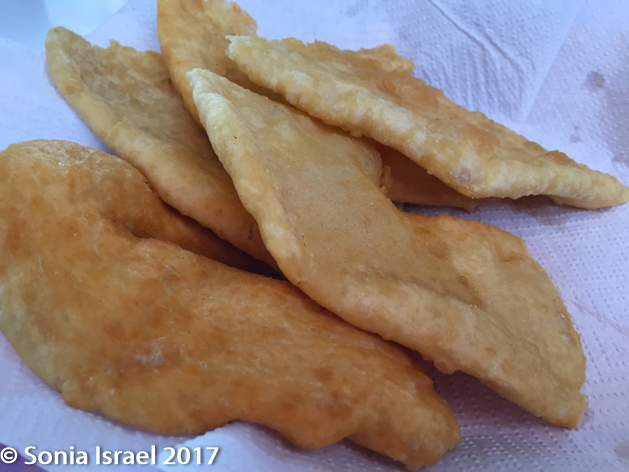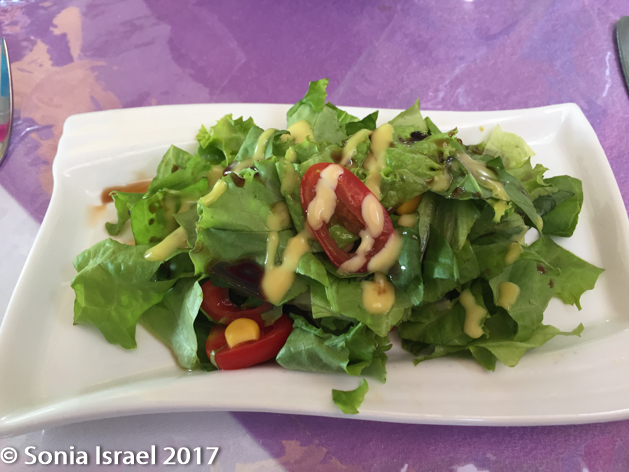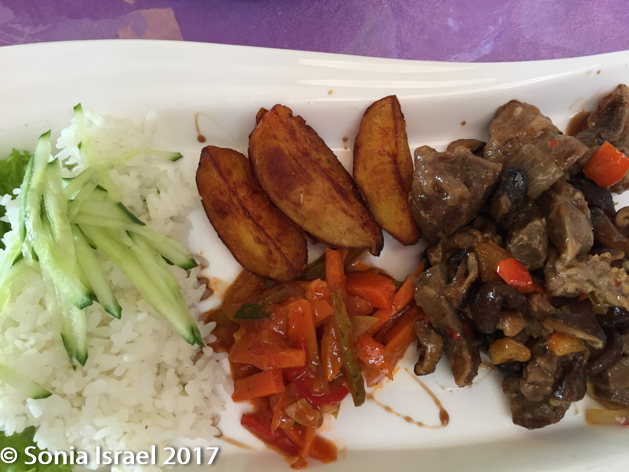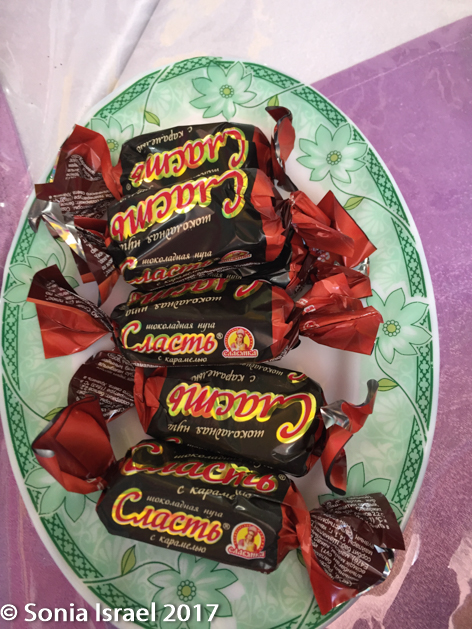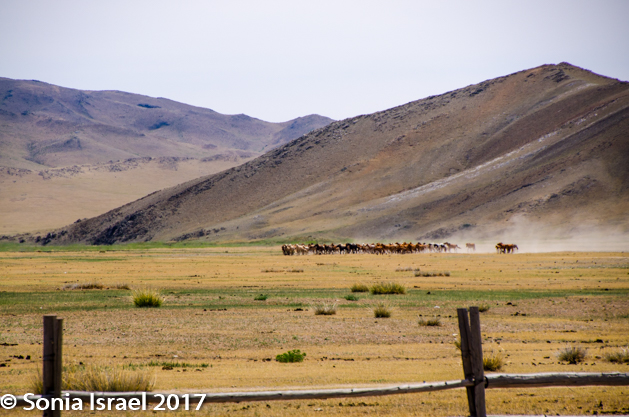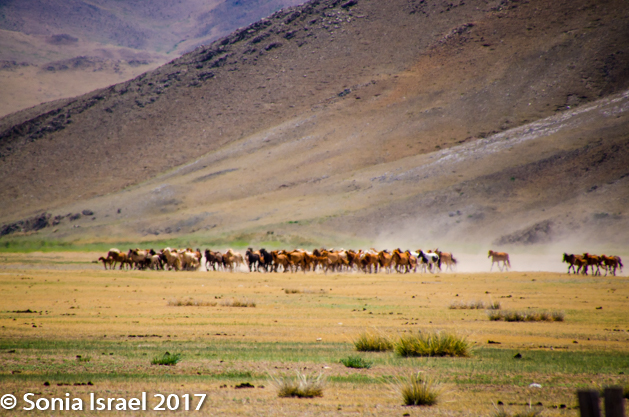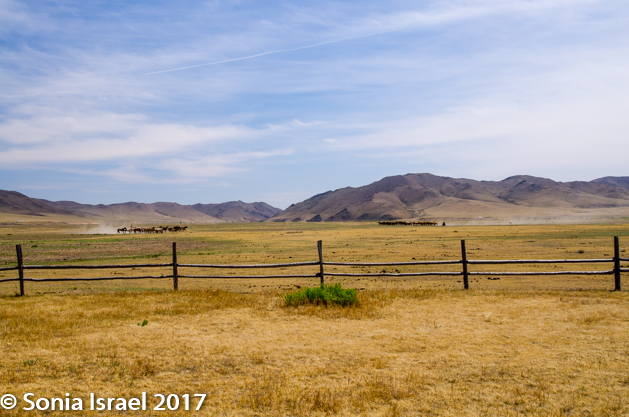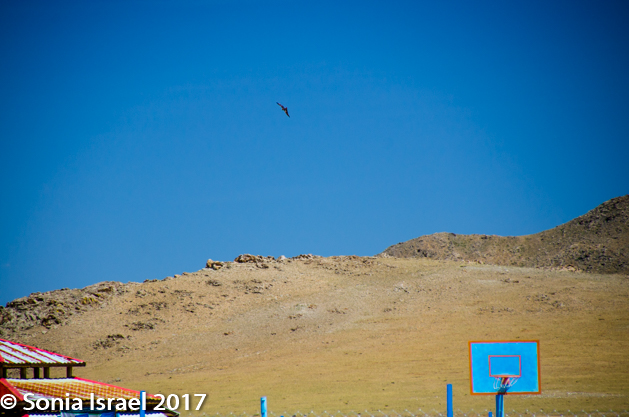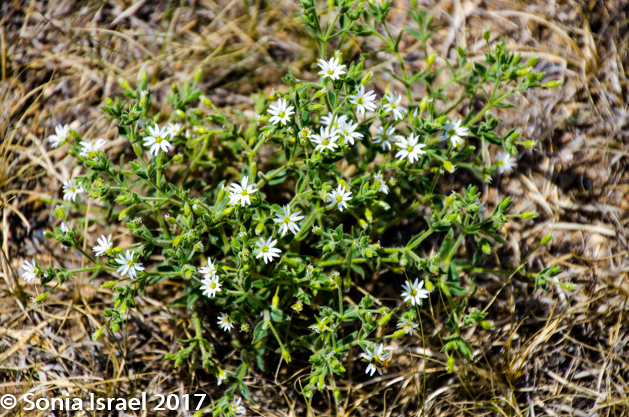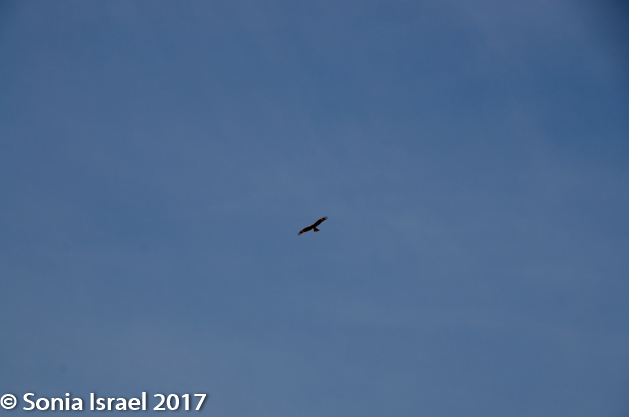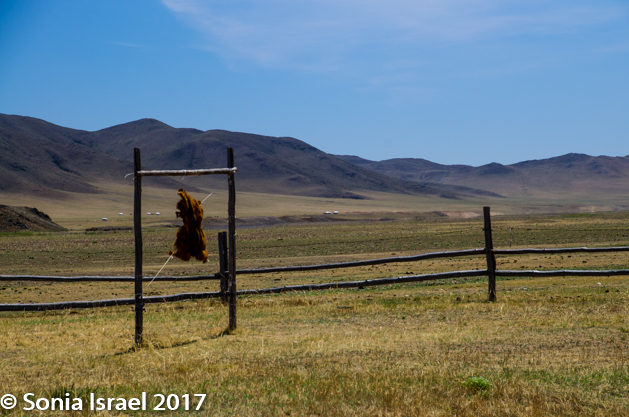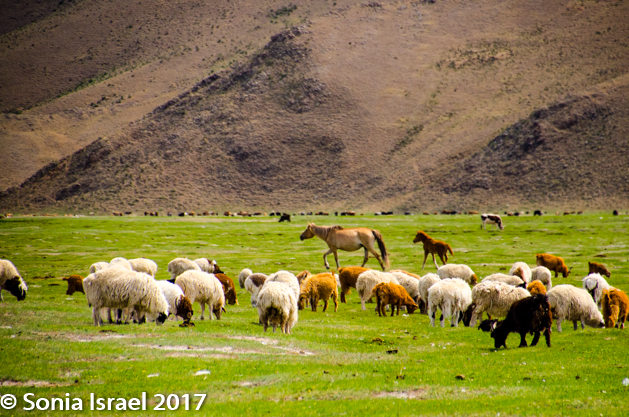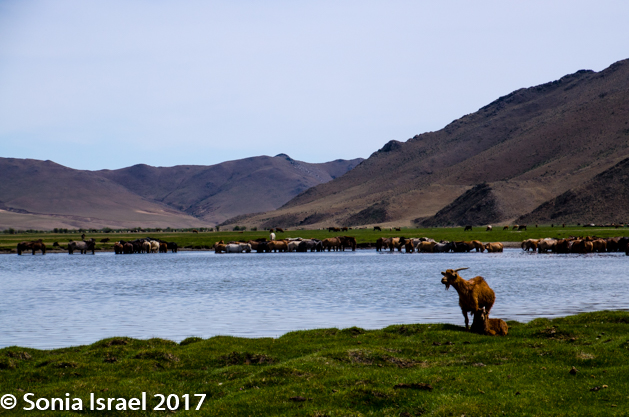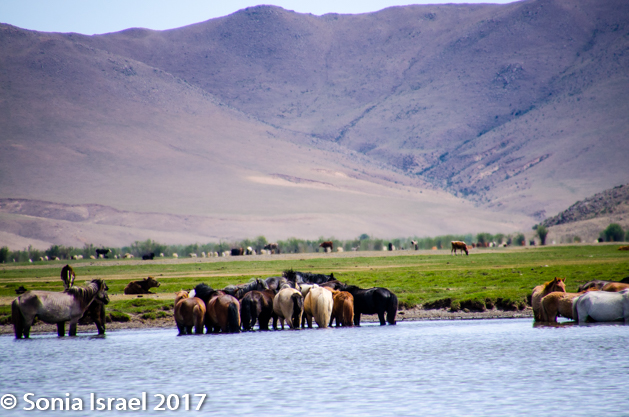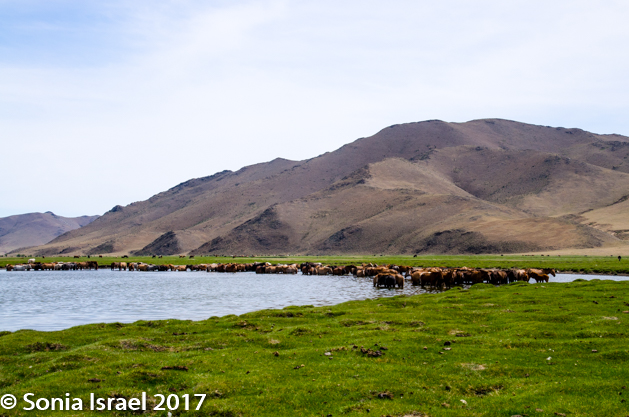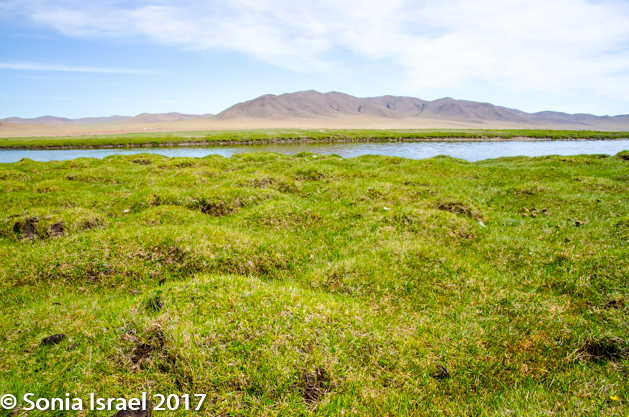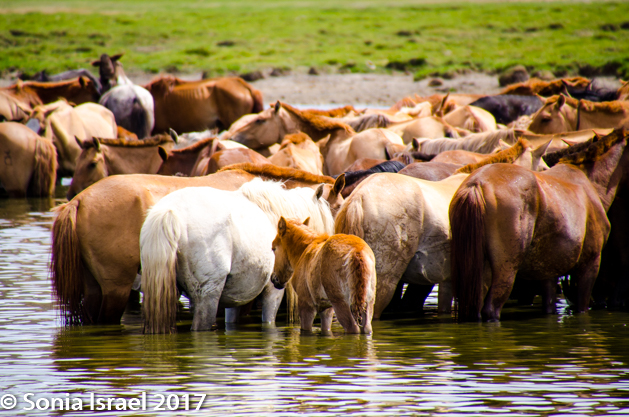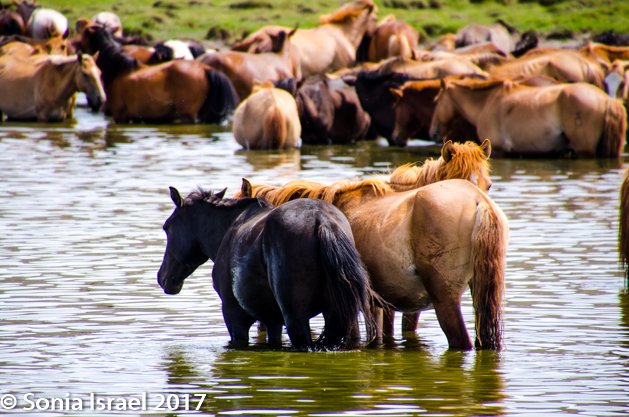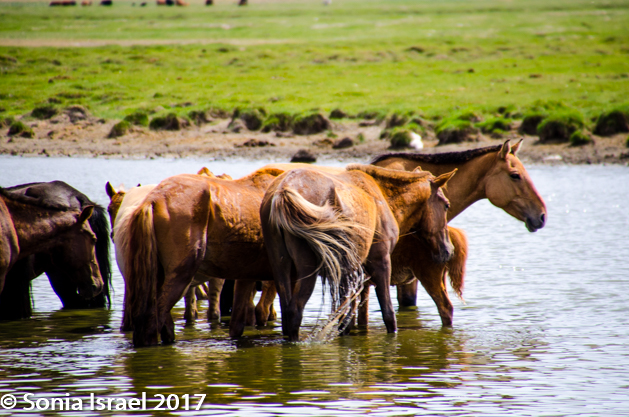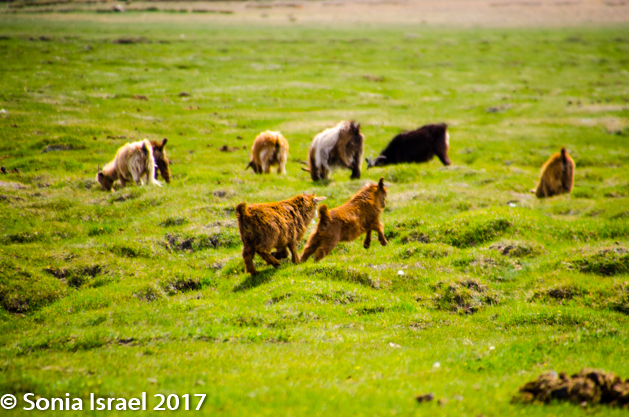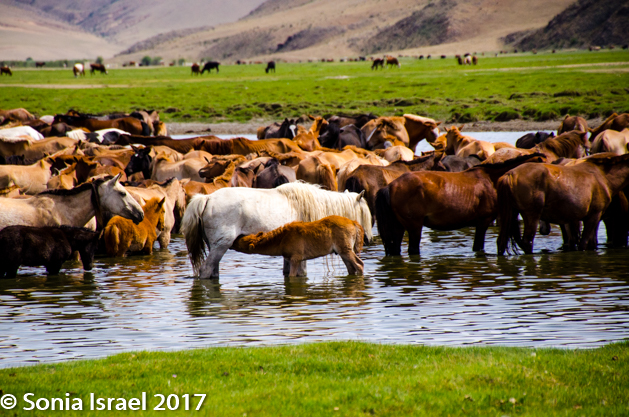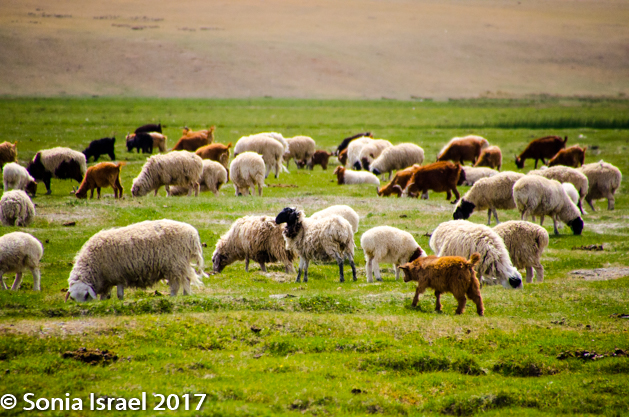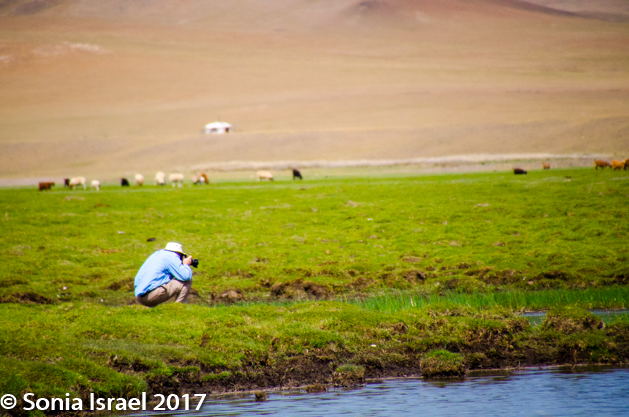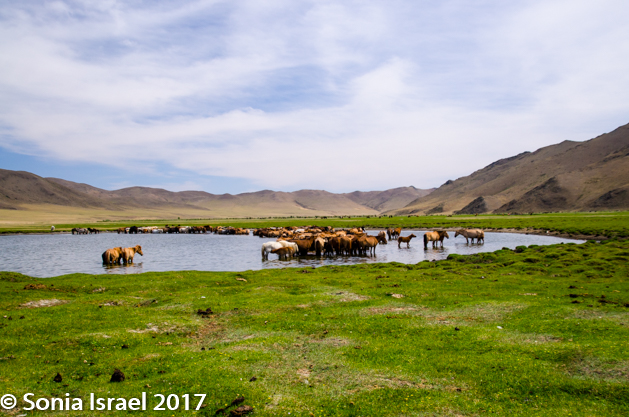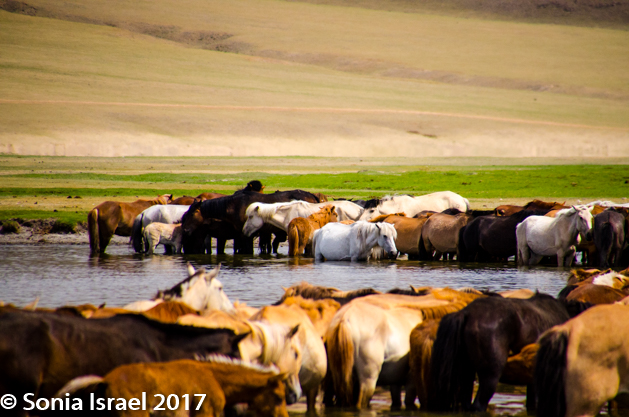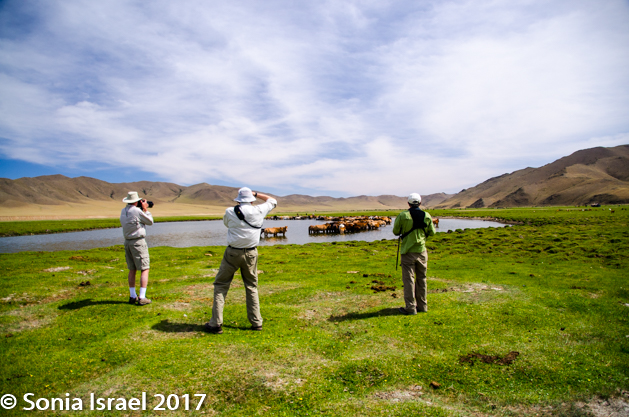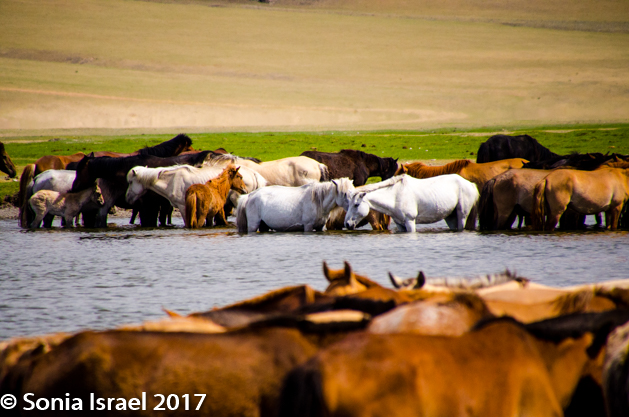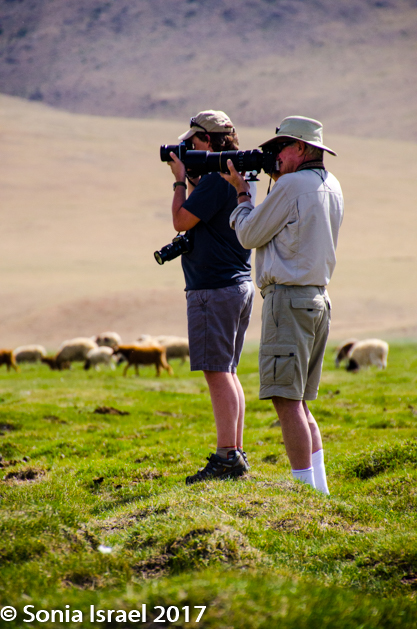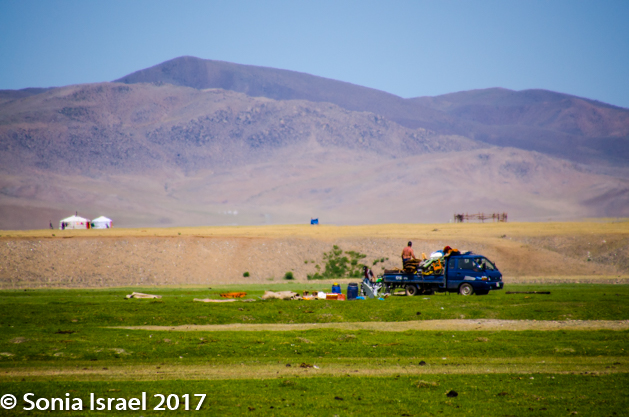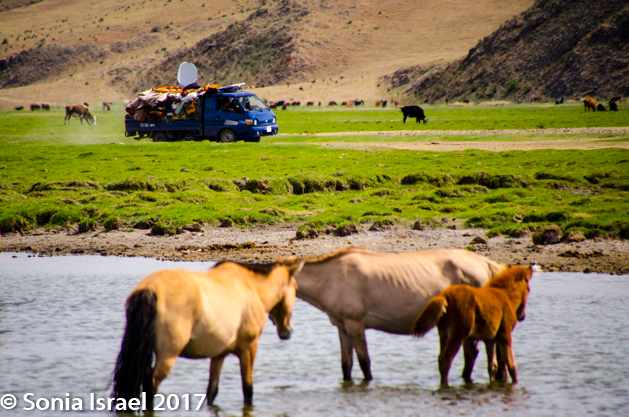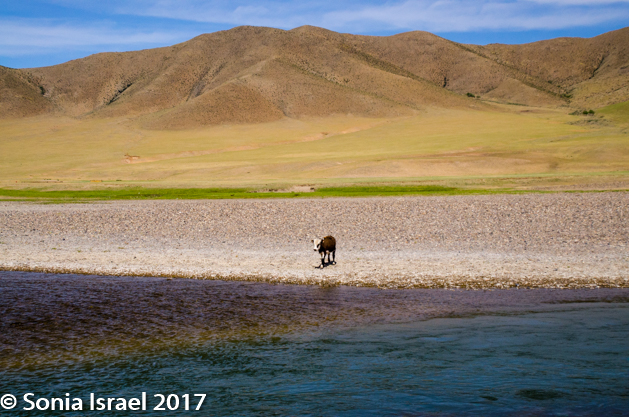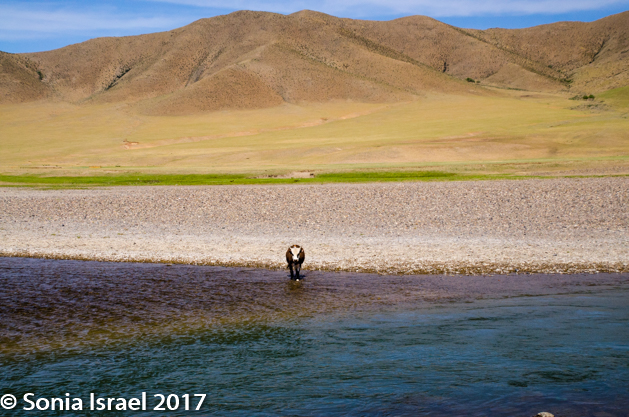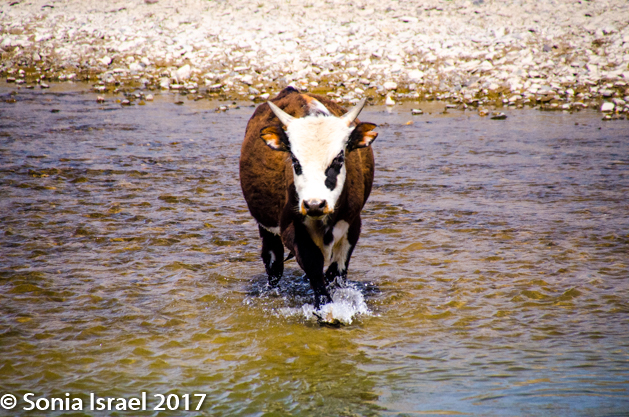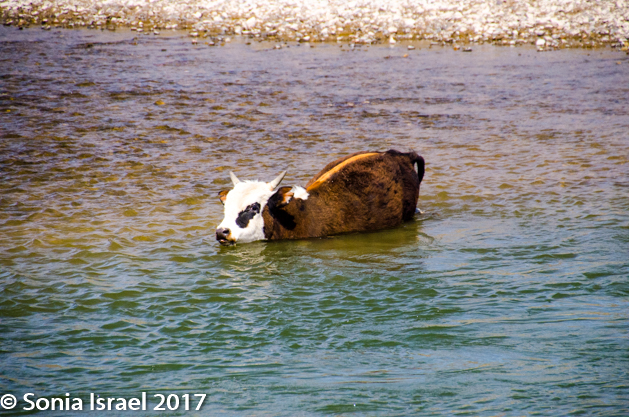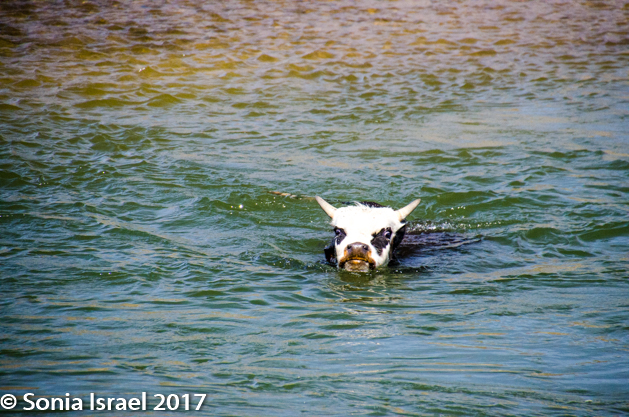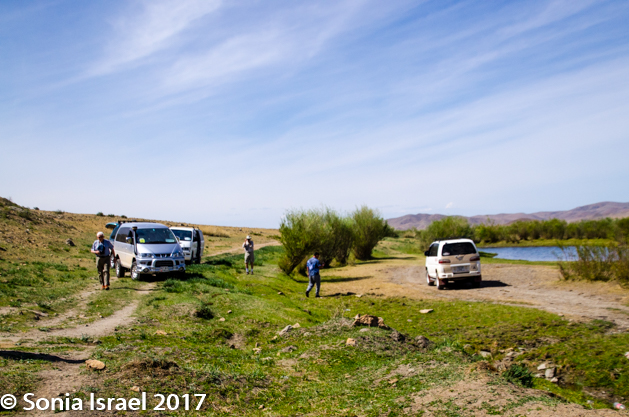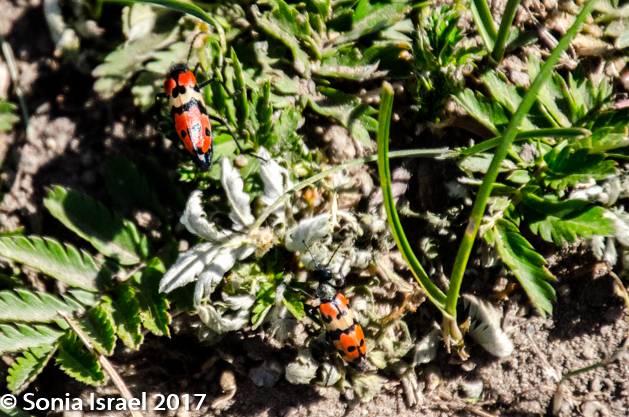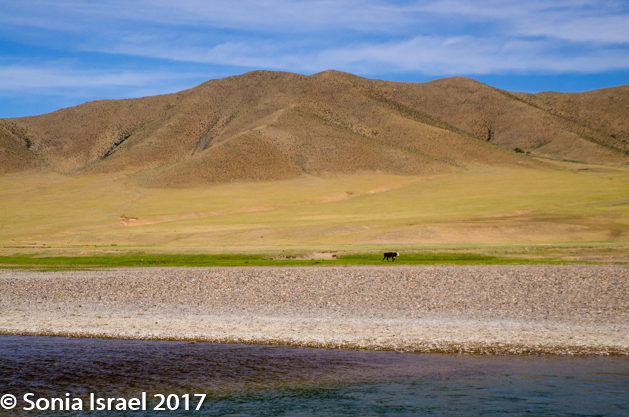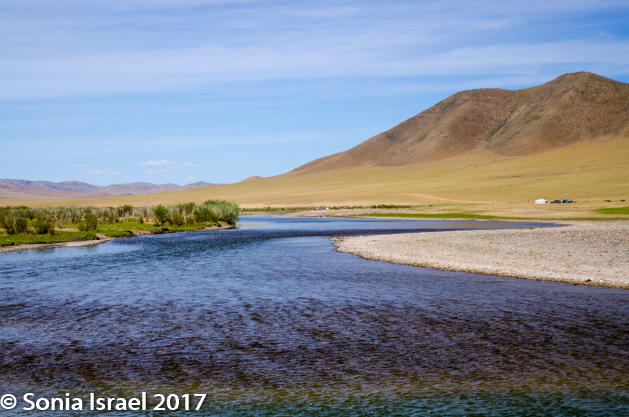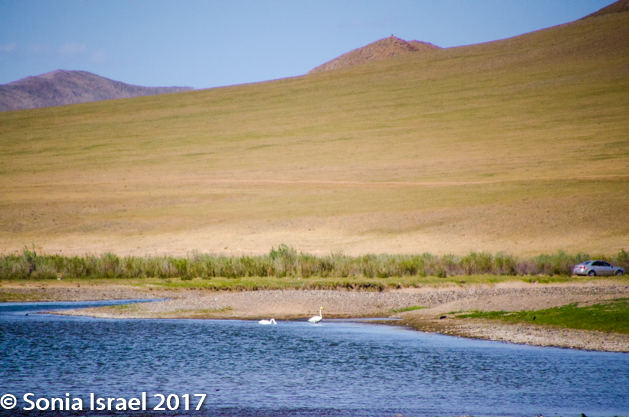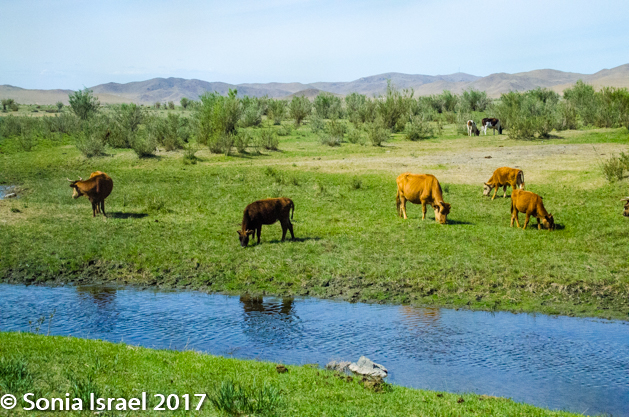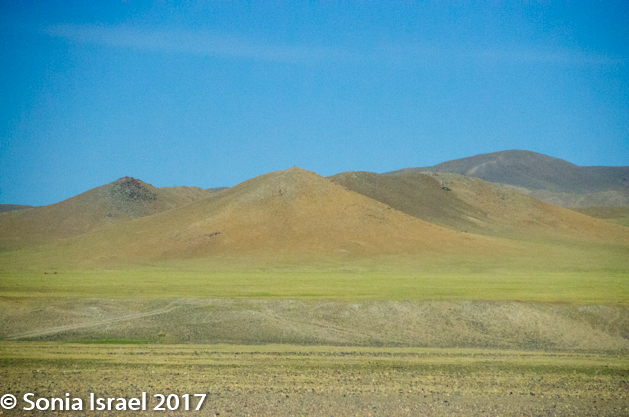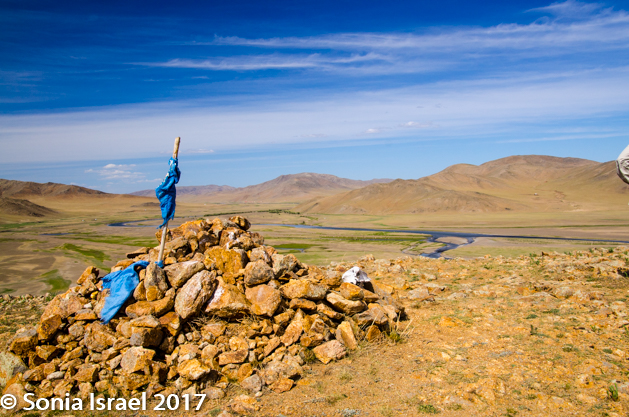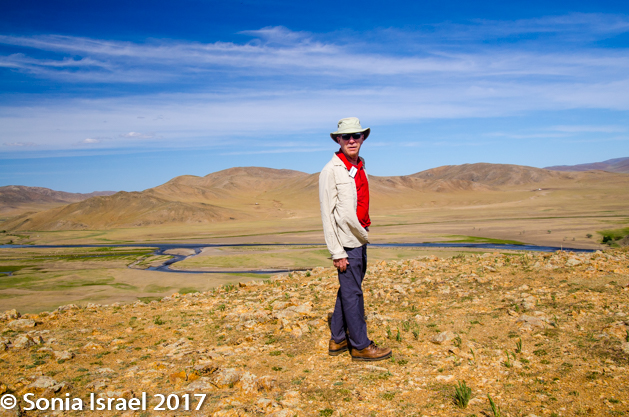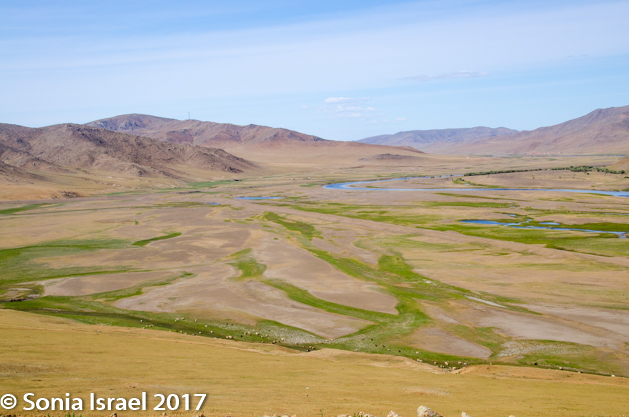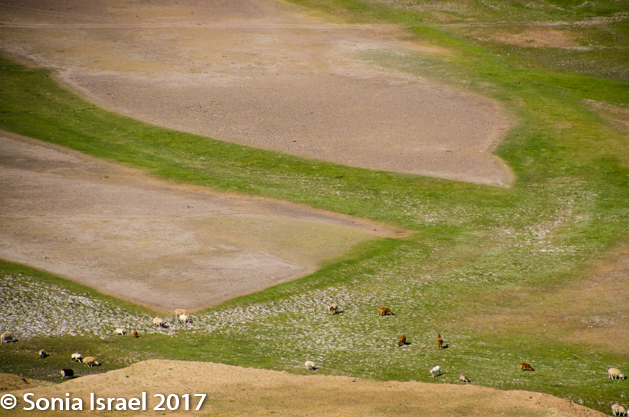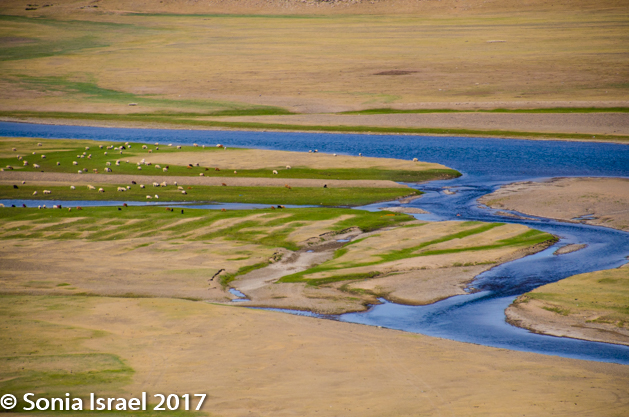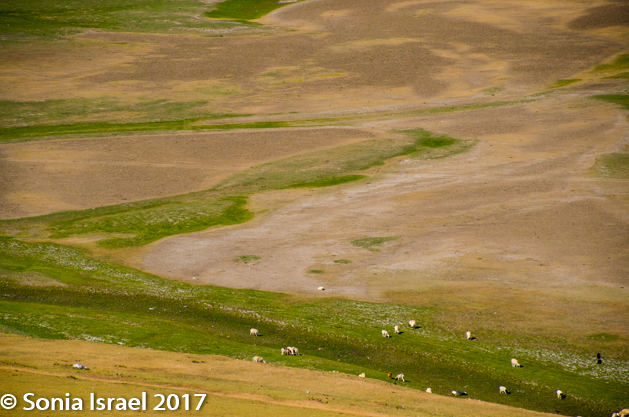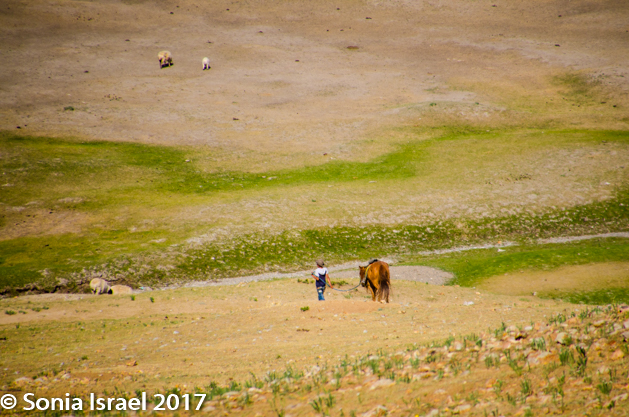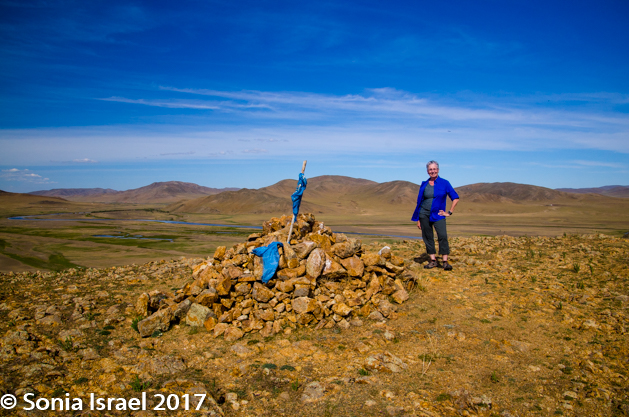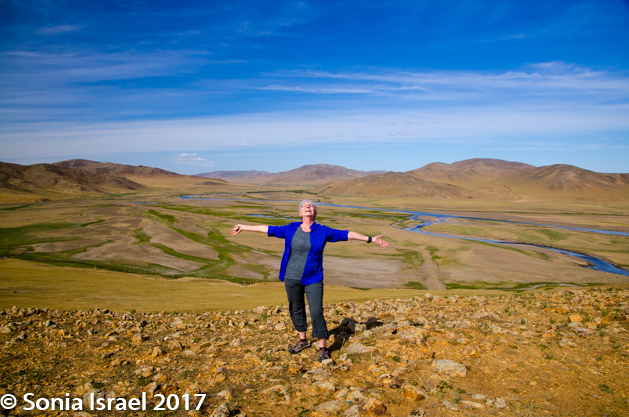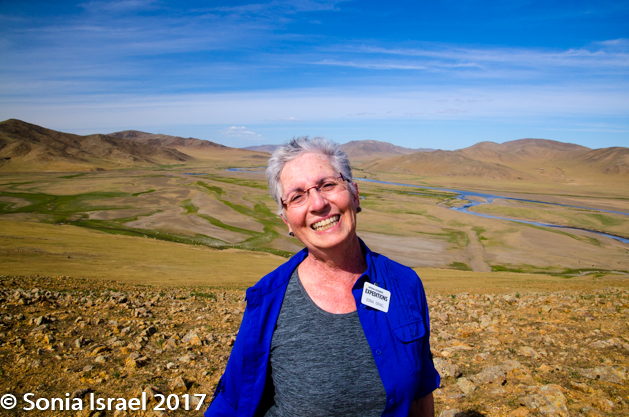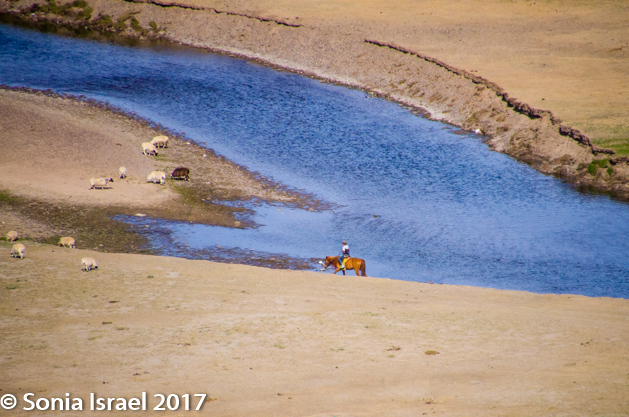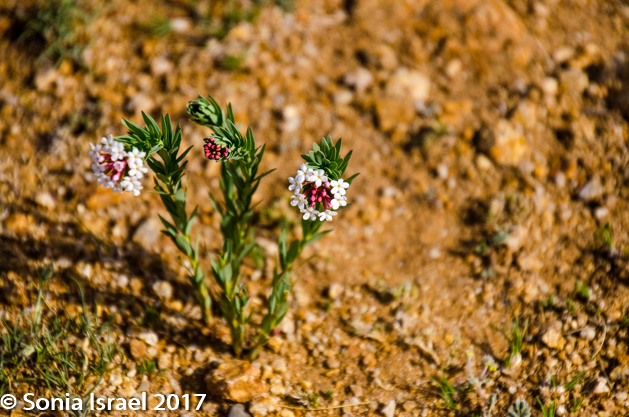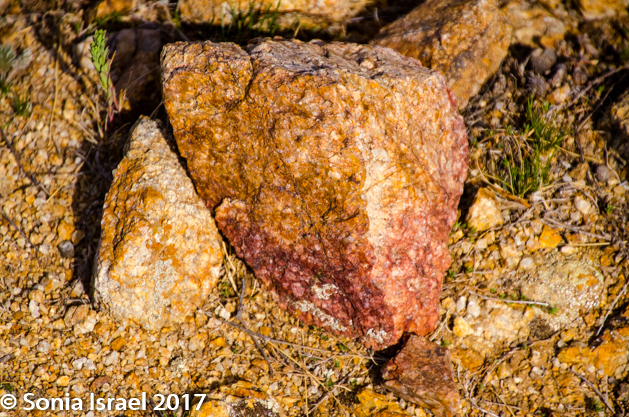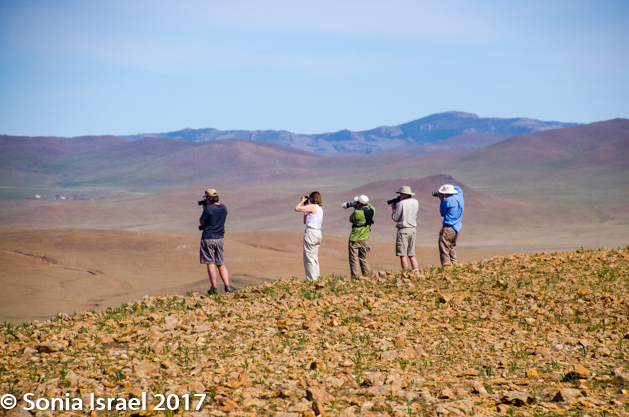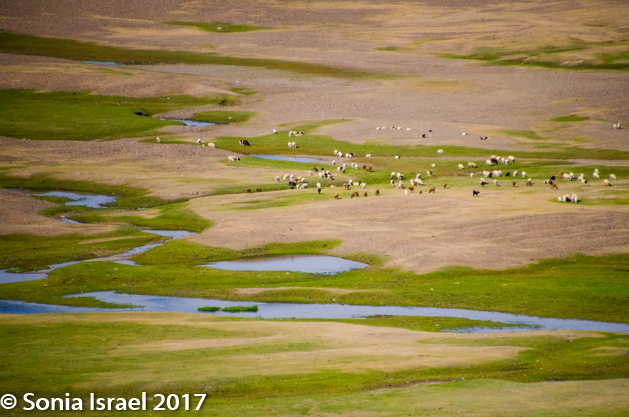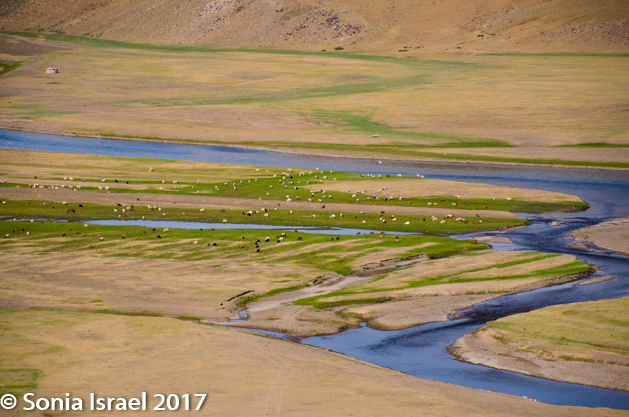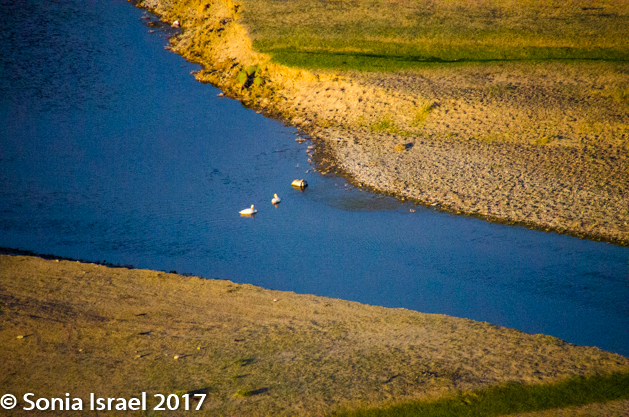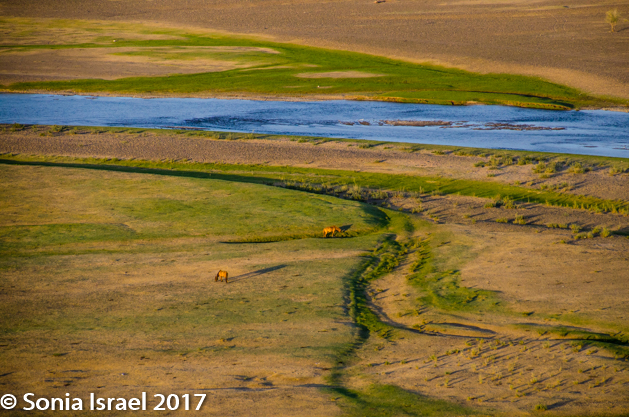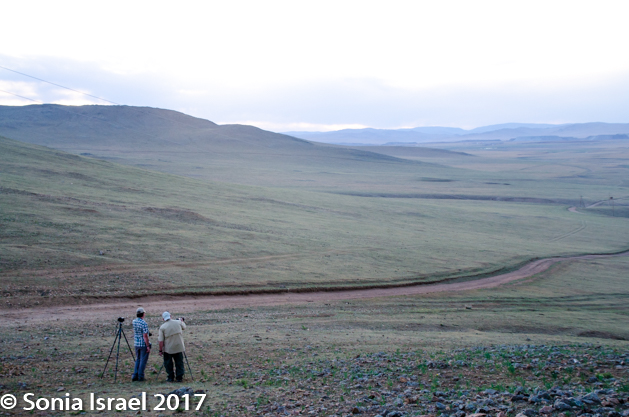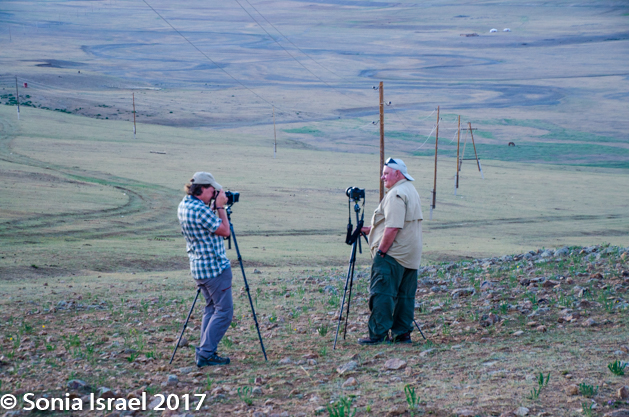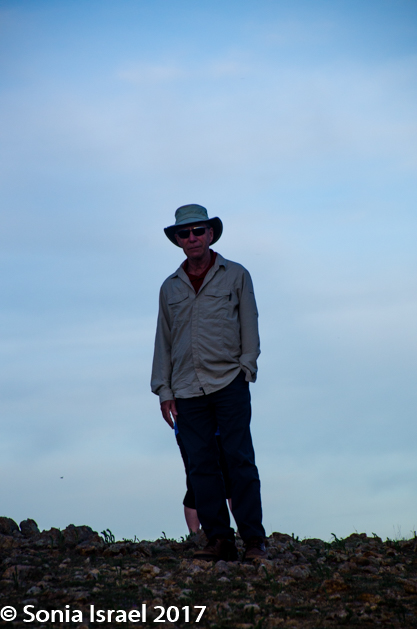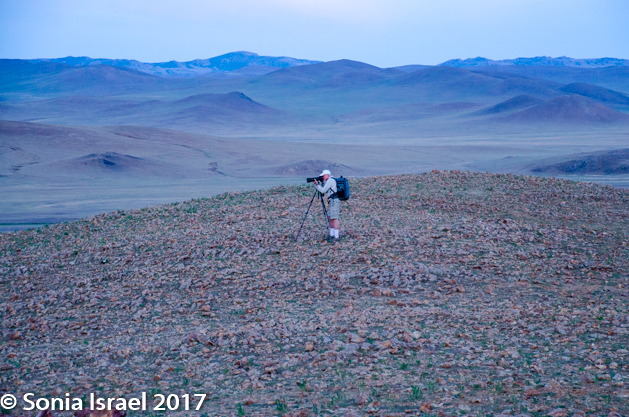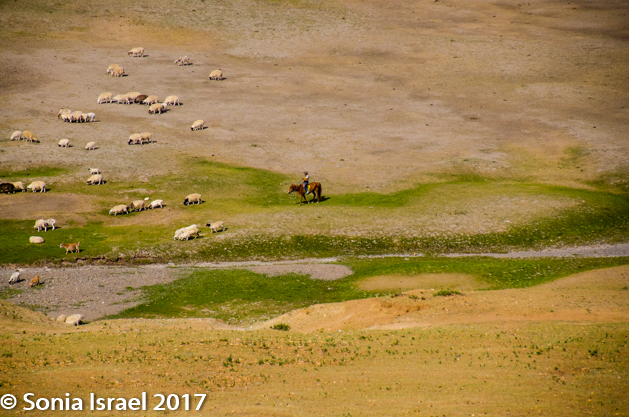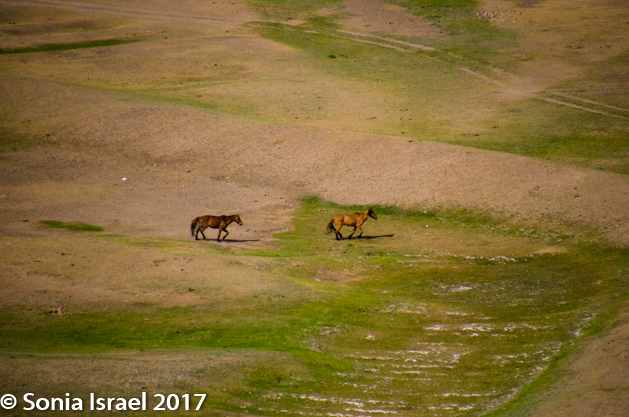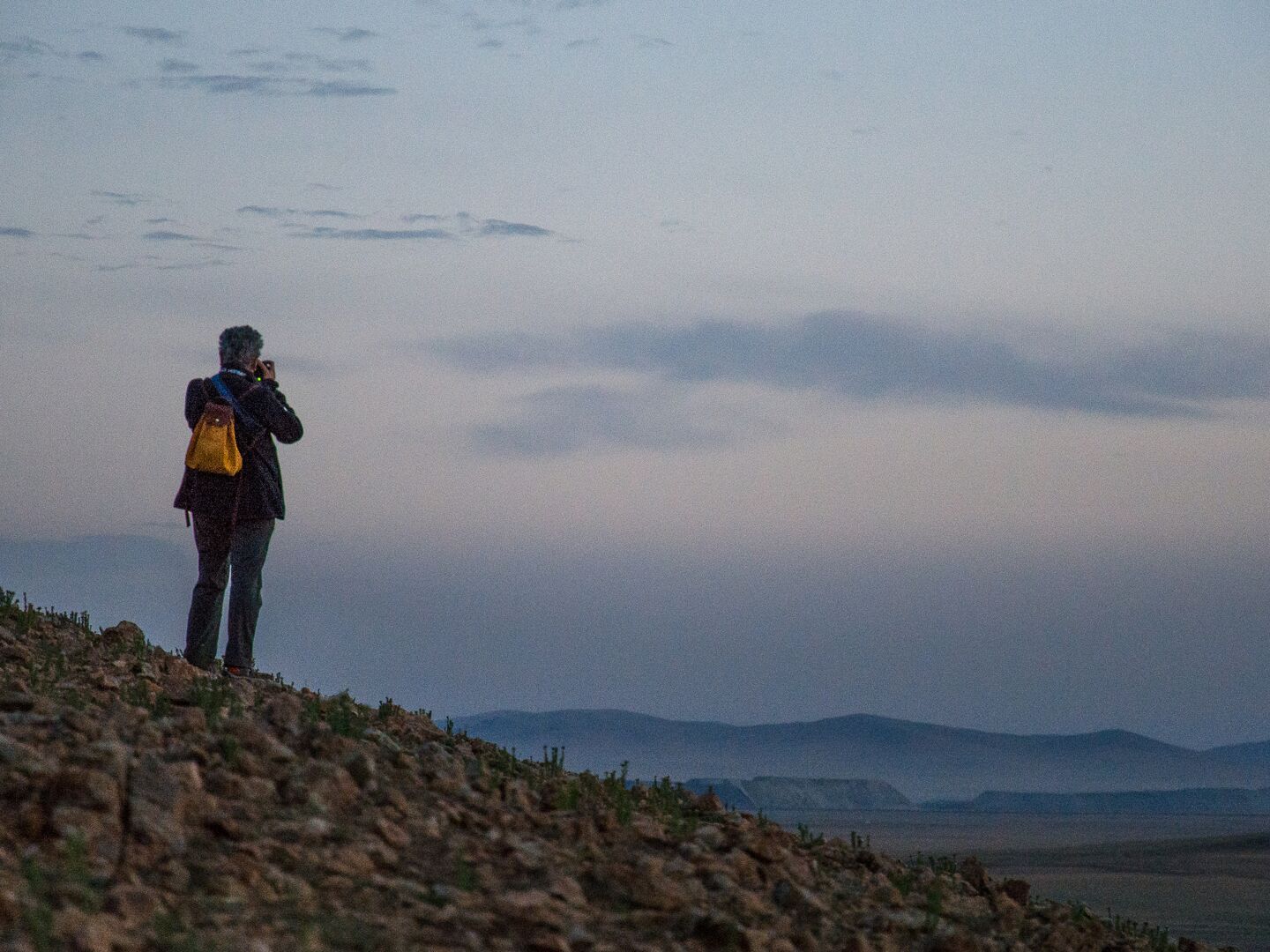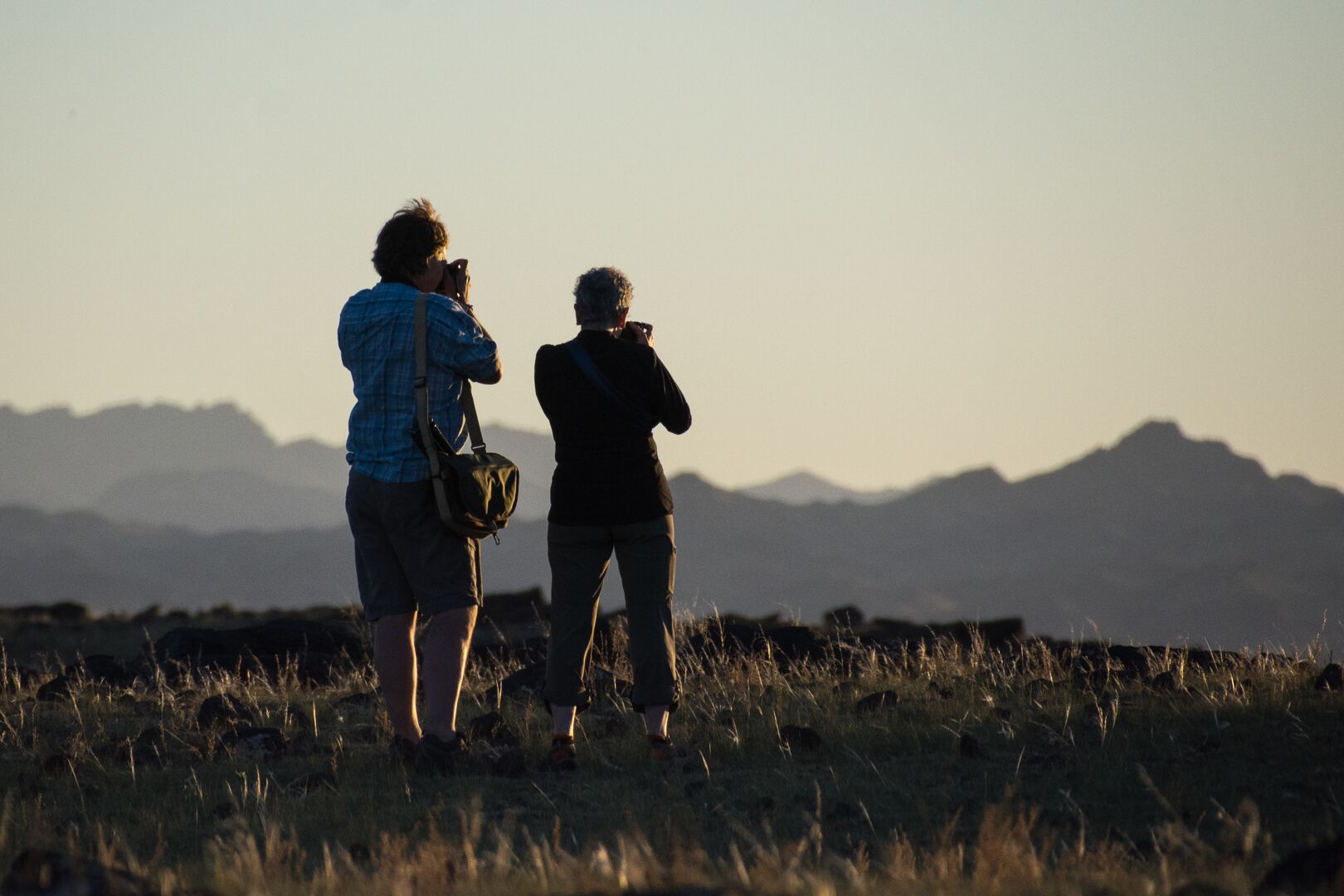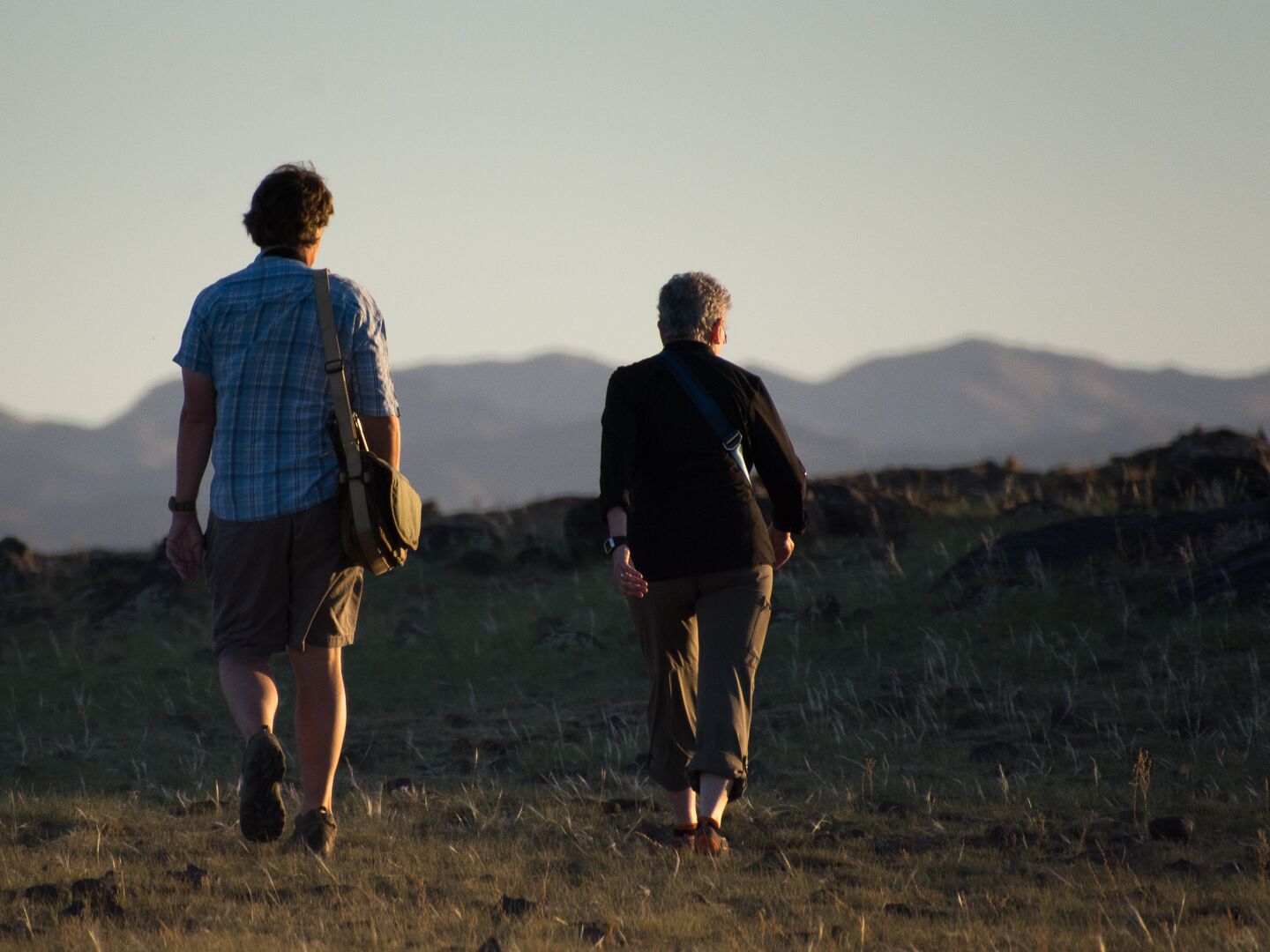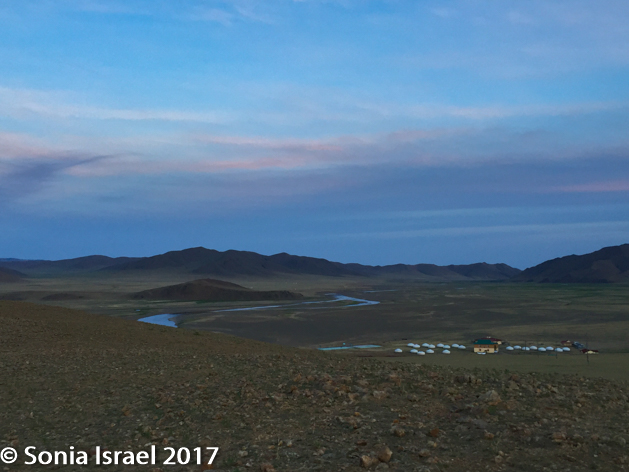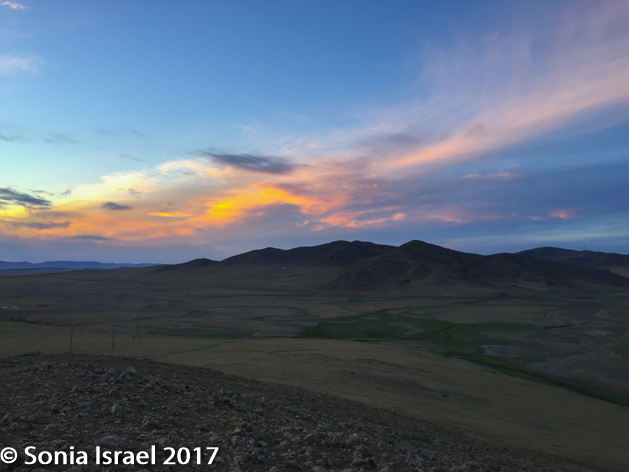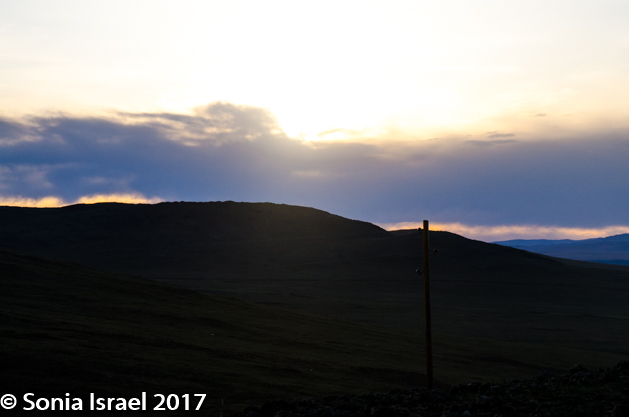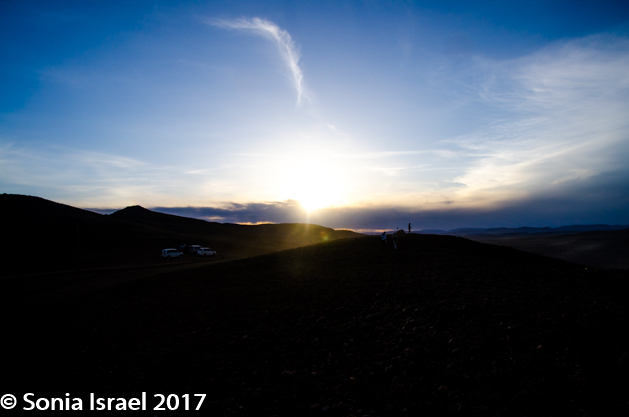National Geographic Trip to Mongolia, Day 2 June 12, 2017
Gun-Galuut Nature Reserve
Today we left UB and headed south-east to the steppes of Mongolia, to the Gun-Galuut Nature Reserve. Instead of the bus, which would never make it on the “roads” outside of the city, we became a caravan of vans. The cars were all numbered and drove in order. We were in the car with Azaa, as well as Tommy and Marilyn so the four of us got to ask Azaa lots of questions and learn more about Mongolia on our long drive.
We quickly left the city behind us, the tall buildings morphing into brown mountains. Brown is the primary color now as Mongolia is in a draught.
Leaving UB
Out in the desert and in the steppes, or anywhere outside of UB, the gers are isolated from each other. But close to the city, the gers are surrounded by fences. And if they don’t have a fence, they use half tires stuck into the ground. Each Mongolian adult is given 0.7 hectares (about 1750 acres) within the urban centers, by the government for a term of 15-60 years. This is your land and you can sell it if you want. Azaa has her piece of land as does her husband. Some families have permanent gers on their land.
But the overall visual effect of these gers with fences around them is that of boxes of different sizes all trying to fit together like a puzzle. And then there are the colors of the villages. The metal roofs, as we noticed on our first day, are orange, yellow, red, blue, green. A rainbow. And the colors all symbolize something. Blue is the eternal sky. Red is fire. Orange prosperity.
As we drove away from UB, there would suddenly be a housing development  straight out of the USA. It just did not fit in. Again, I ask, progress?
straight out of the USA. It just did not fit in. Again, I ask, progress?
Education and Army Service in Mongolia
We asked Azaa about the education system in Mongolia. Until the year 2000, all children were required to go to school until tenth grade. Now it is 12th grade. School starts at age 7 and is free, funded by taxes. English is taught from grade 5. There are over 150 4-year colleges, mostly in UB, but those you have to pay for. Many students go abroad for graduate school, but they tend to come back to Mongolia.
Every male between 18-25 years old has to serve in the army for one year, although if you have money, you can buy your way out. Students often serve during the summers so they don’t have to miss school. Only a small percent of boys go into the monastery, but monks do not serve in the army.
The Color Brown
The road we were taking was a toll road and the toll both operator was a  young man wearing a San Diego baseball hat. Small world. It would have been great to hear that story.
young man wearing a San Diego baseball hat. Small world. It would have been great to hear that story.
The land around us was still brown but there were mountains on the horizon. And although the mountains too were brown and barren, on the top ridge there were sometimes lines of trees. The houses became farther and farther apart and we started seeing more and more gers, although those were not close to each other either. The country side was dotted with herds of goats and sheep, and as we got farther from the city, horses, cattle and even camels. Now we were in nomad country. Someone said that the flocks of sheep were of biblical proportion!
Sometimes the sheep or cattle or horses were randomly grazing up and down the mountains and the valleys, on whatever they could find to eat. Other times they formed very straight lines, with one following the other.
Mongolian Ovoo
We had been on the road for about 1.5 hours at this point so it was time for a break. We stopped at an Ovoo. Ovoos are traditional monuments usually made of mounds of rocks, often covered with prayer flat where the Mongolians and other travelers stop to bring offerings for good luck. A Mongolian is never supposed to pass one without stopping. The offerings could be money, strands of a horses hair, or just about anything. When you stop at an ovoo, you walk around it three times in a clockwise direction and add stones to it. It is believed to be linked to the mountains and the sky. We walked around it looking at all the items that had been offered. There were wooden beads, a small brass pyramid, money, a drum, lots of ribbons and prayer flags, scarfs, a Genghis Khan statue, and an empty liquor bottle. Perhaps the alcohol had been poured on top. Or maybe it someone drank it.
We used this opportunity to use the bush toilet. Yes, out in the wilderness, that is what you do. You find a bush and go for it!
We spent quite a bit of time taking pictures (after all this was a photography trip). Before we left some young men stopped by, walked around 3 times and added stones. Just like we had read.
Reaching the Steppes
The landscape kept changing and now we were in the steppes. There was no road. Each car would make its own tracks and the others would try to follow. But every once in a while, a car would break loose of the caravan and go careening down making its own new tracks. And if there were horses or goats on the “road,” we would just drive around them. There was a time when the tracks were just made by the horses. Today it is mostly cars.
We kept driving. We saw more brown mountains. And then suddenly there would be a green strip of land and you would know there was a stream nearby. There were different terrains as we drove. There were stripes of green grass. There were valleys between rugged mountains. And then there would be flat areas with nothing as far as the eye could see. Long stretches with no herds and no gers. Looking arond one could believe that the earth is flat.
As we got deeper into the steppes we passed railroad tracks and a bridge used for trains to carry coal to the city. Here in the middle of nowhere (although all of Mongolia seems like the middle of nowhere – in a beautiful peaceful way), there is a coal mine.
Nature at its best
And then suddenly there was a lake, a small lake filled with what seemed like hundreds of cranes and horses. We all got out with our cameras and started shooting. One of our photographers got a bit too close and the cranes all took off, filling the sky with their wings and the air with their songs. The horses ignored all of this and just continued to drink the cool water. And it wasn’t just the birds and animals we were watching and photographing. There were little flowers everywhere. And the most beautiful insects like grasshoppers and crickets and others I couldn’t identify. Nature at its best.
Steppe Nomads Eco-Camp
And then it was back into the cars and off to find our ger camp. We had traveled about 80 miles and finally arrived at the Steppe Nomads Eco-Camp at the Gün-Galuut Nature Reserve, near the Khentii Mountains where it is believed Genghis Khan is buried.
Gün-Galuut Nature Reserve has a great diversity of ecosystems even though it is a comparatively small area. It is filled with high mountains, steppes, rivers, lakes and wetlands. As we looked around, it seemed that the steppes where meeting the sky with nothing in-between. Just a vastness, long empty spaces, with some undulating hills, spreading out as far as the eye could see. The vastness is impossible to capture on film although I kept trying. One could understand why people once believed the earth was flat. And the colors! Light green. Brown. Dark green. Shapes from the shadows of the clouds. Puffs of sand from cars. Stripes from multiple car tracks. And then herds of sheep, goats, cattle, horses, camels. But never intermingled. And then we would see puffs of wool caught on the plants. Like flowers or cotton. This is Mongolia and we would experience this feeling of vastness everywhere we went.
Our caravan pulled into the parking area and we all piled out of our cars, anxious to see the sights and experience our first ger. Our
luggage was taken on a cart which was pulled by one of the men working there and each suitcase was delivered to the appropriate ger. The gers were set up in two straight rows, like soldiers standing at attention. Each ger had a brightly painted and decorated orange door. There was a main dining hall and a common shower and bathroom facility. It reminded me of the old days of Israeli kibbutzim when everyone ate in the dining hall and everyone shared the showers. Here it was important to have a flashlight if you wanted to get up at night as the only light came from the millions of stars up above…and from the lights lining the walkway.
We grabbed our key and headed off to find our ger. So, what is a ger?
Gers
Gers (pronounced gaire), called yurts by the Russians and Turks, are the traditional felt tents of the nomads. The word ger is Mongolian and literally means “home,” just as the Turkish term “yurt” can mean “homeland” and/or “dormitory.” It is a tent-like structure supported by wooden crisscrossed lattice frames which are tied together, expanded and attached to the doorframe to create a circular body. On top of these are brightly painted slats (called uni) which go up and attach to a roof ring (called toono which looks like a circular wheel or crown) at the top. The entire structure is covered with layers of felt and canvas. The gers stay cool in summer and warm in winter. The toono is left open for air and to be used as a sundial, but can be covered during rain or snow or to keep the cold air out. How is it a sundial? Sunlight enters the ger and revolves around the inner wall, and the seasonal and daily patterns of shifting light forms angles which create a sundial. There are two main posts which help hold up the toono and we were taught that you never walk between these posts.
There is always a beautifully painted wood framed bed. There is a wood burning stove in the center with a pipe out the top “window” and there is a wooden door, often brightly painted and covered in designs. You never sit in front of the door.
The ger is easy to take apart as the nomads do that at the change of each season, and while it used to be put on the camels or horses, today it is transported by trucks, which all seem to be blue. And true to the life of the nomad, they can be taken down or put up in about 30 minutes, put on the back of the horse or camel (or these days on the bed of a truck) and hauled to the next destination.
When we were in the Gobi, we saw a demonstration of a ger being built. Since I’ve just described it, I’ve put those pictures here:
When you get to your first ger, the first thing you learn is to duck as the doorway is always low. Even I, at only 5’2” had to duck my head. This ger was simple, but had all we needed. We had four single beds lining the walls and a wooden stand with a few hooks. And one single light bulb hanging in the middle which at night was turned off as there was no electricity. In the center was a wood burning stove. And there were two larger posts, shaped like a slingshot, holding up the “wheel” window, the toono, at the top and decorated in all colors with beautiful designs.
- Dining hall
- Showers and Bathrooms
- Our ger
We had lunch made from locally grown, organic products. The dining hall was large with a rainbow of fabric circling the ceiling. It was here that we could find outlets to charge our batteries, computers and phones, as there were no outlets in the gers.
And as we were sitting there enjoying lunch, a large herd of horses appeared galloping across the plain. They were just a long line of horses moving across plains. And before we knew it, a second herd appeared, galloping in the other direction. The two herds passed each other, like cars on the freeway, and just kept going, until all that was left was the dust in the air, slowly settling back down to the ground.
We wandered around the grounds of the camp a bit. It was surrounded by a wooden fence. Birds were flying everywhere, both small ones and large ones. And the air was so fresh that it filled our lungs with happiness.
Horses, horses and more horses
And then it was back into our cars and off to explore. We drove to a lake that was full of horses. Full. It seemed like close to a hundred, although I did not count them. The horses all stood around in tight groups just posing for us. They were brown and spotted and tan and a few white ones. There were foals nursing. And they just ignored us. And on the field next to the lake was a herd of sheep, running, grazing, jumping into the air. And also ignoring us.
In the distance we could see a family taking down their ger, but only two of our group were wise enough to go over and talk to them and photograph them. Unfortunately, I was not one of them. I was so focused on the horses, that it never occurred to me to wander around. Big mistake as that was a lost opportunity.
From there we drove over to another part of the reserve where we went looking for Argali sheep. But we would not spot any. We did however watch a lone cow slowly make her way across the vast stones, swim across the stream and walk up the other side, almost right into us.
The area was covered in irises, but because of the drought, they were not blooming. I could just imagine how gorgeous it must be when the floor was covered in purple.
Sunset
We didn’t stay there long, as we all wanted to watch, and photograph, the setting sun. We drove up the hill near the ger camp and settled in, most with tripods, and watched and waited. Below us were some streams with sheep, goats, horses and cows drinking their fill. On the other side was a snaking, s-curved road with three gers with red doors. And behind us was another mountain. There was an ovoo and it felt spiritual and quiet.
At one point a car drove down the s-shaped road, leaving a trail of dust. Cars spewing dust is a common sight here. But this was particularly ethereal.
The sun was setting. The eternal blue sky was turning colors. And the dust just snaked its way around the bends. The three gers with their red doors stood out against the brown mist.
It was so quiet. Except it wasn’t. In the distance, we could hear a girl singing as she rode her horse to herd the other horses. We heard the horses neighing. The cows were snorting. Wonderful, wonderful sounds in the midst of the quiet.
Some of us stayed until the final moment and then quietly walked down the hill to our gers, settling in for our first night as nomads.
And as we settled down for the night in our ger, we heard the wind. The walls fluttered. The wind sounded loud as if it was echoing off the walls and we could just imagine it blowing through the plains. But there was no window to look out. There was just the opening at the top, like a round skylight that only let in the light of the sun. And yet, in our cocoon of quilts and darkness, the sound of that wind was somewhat comforting. For we knew we were safe and cozy in our ger.
